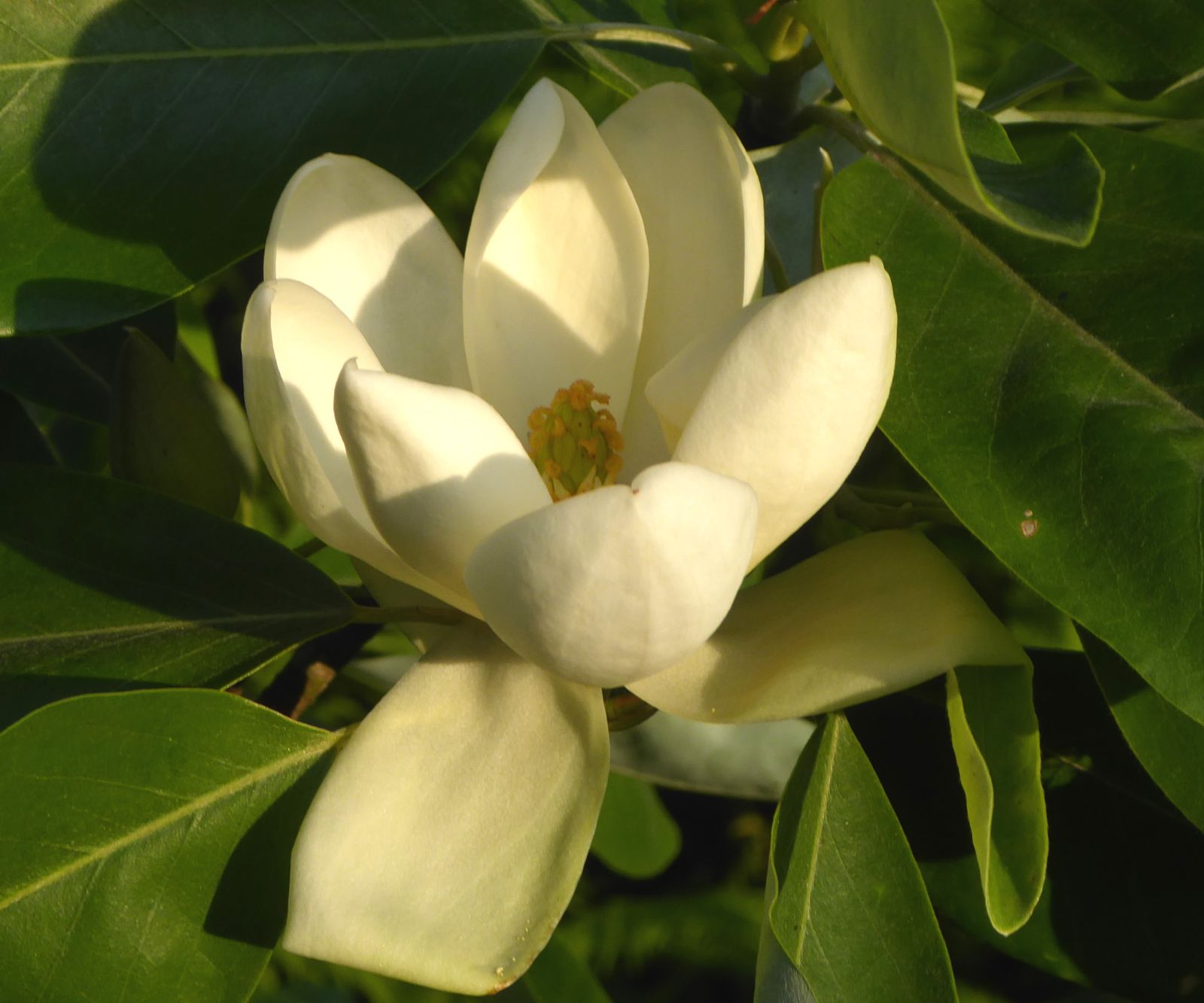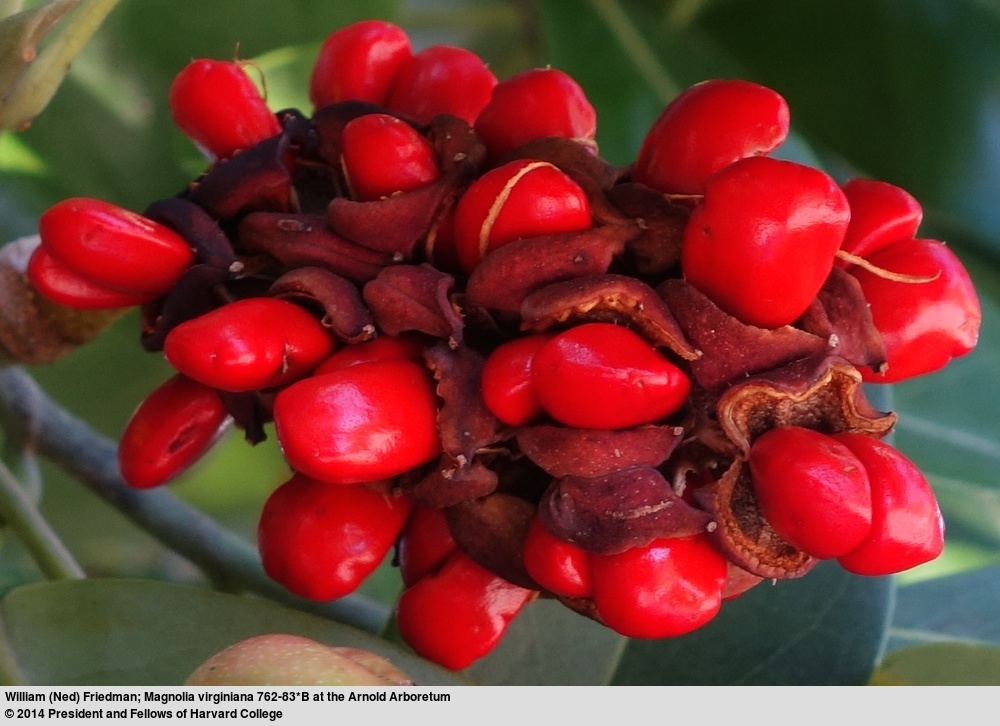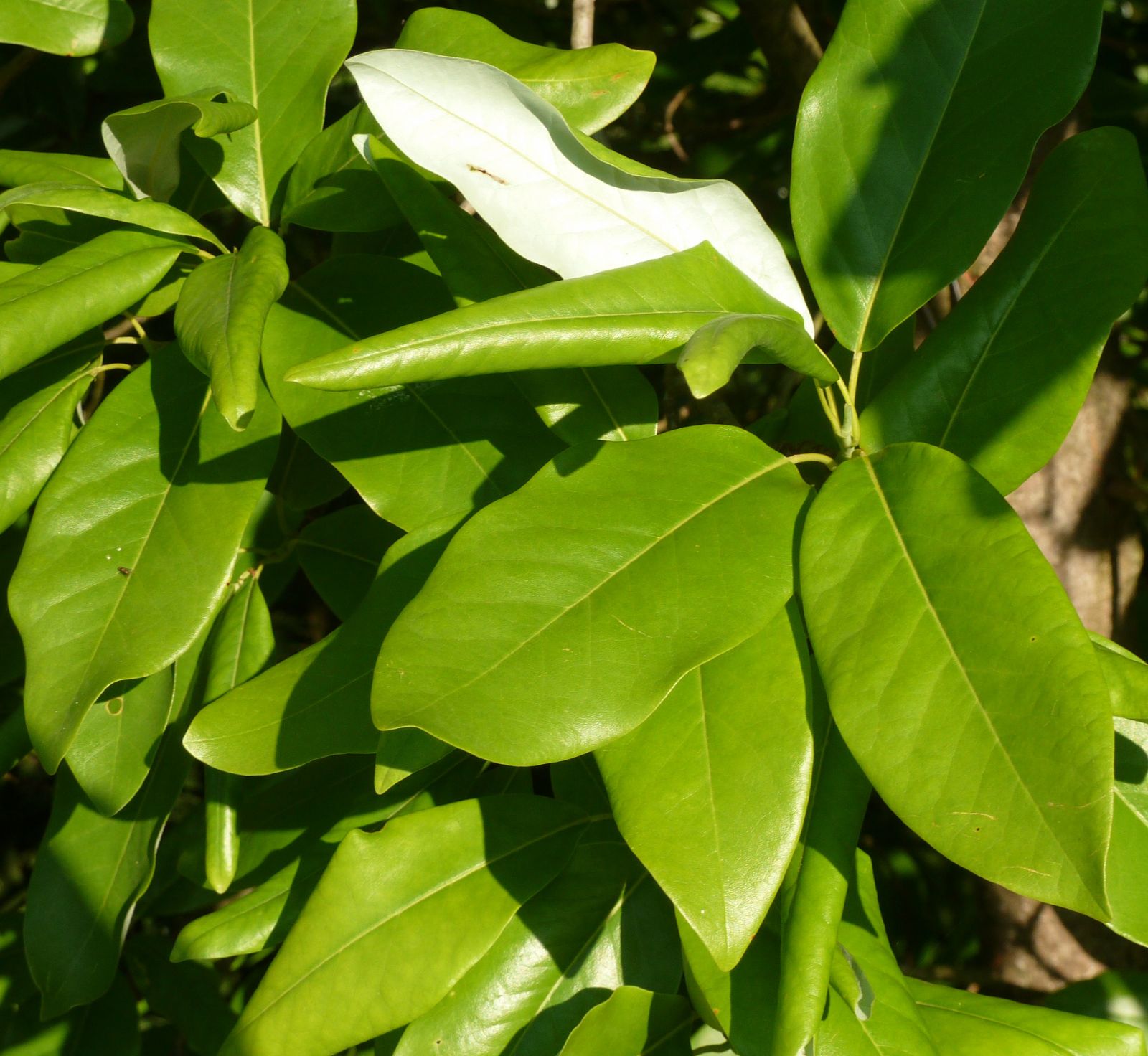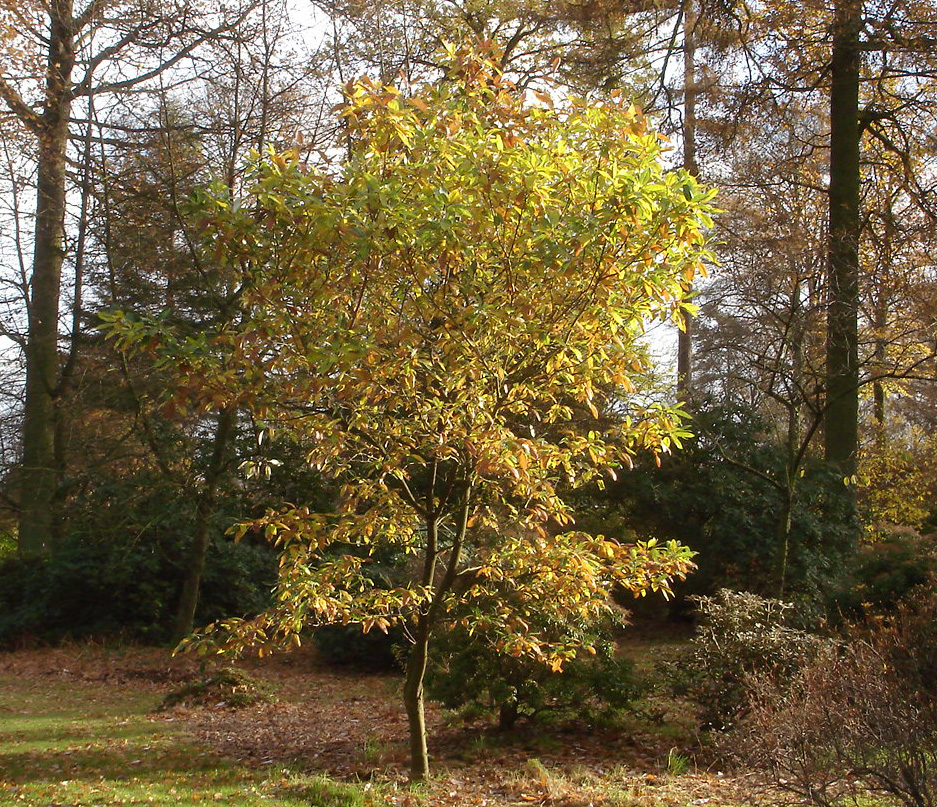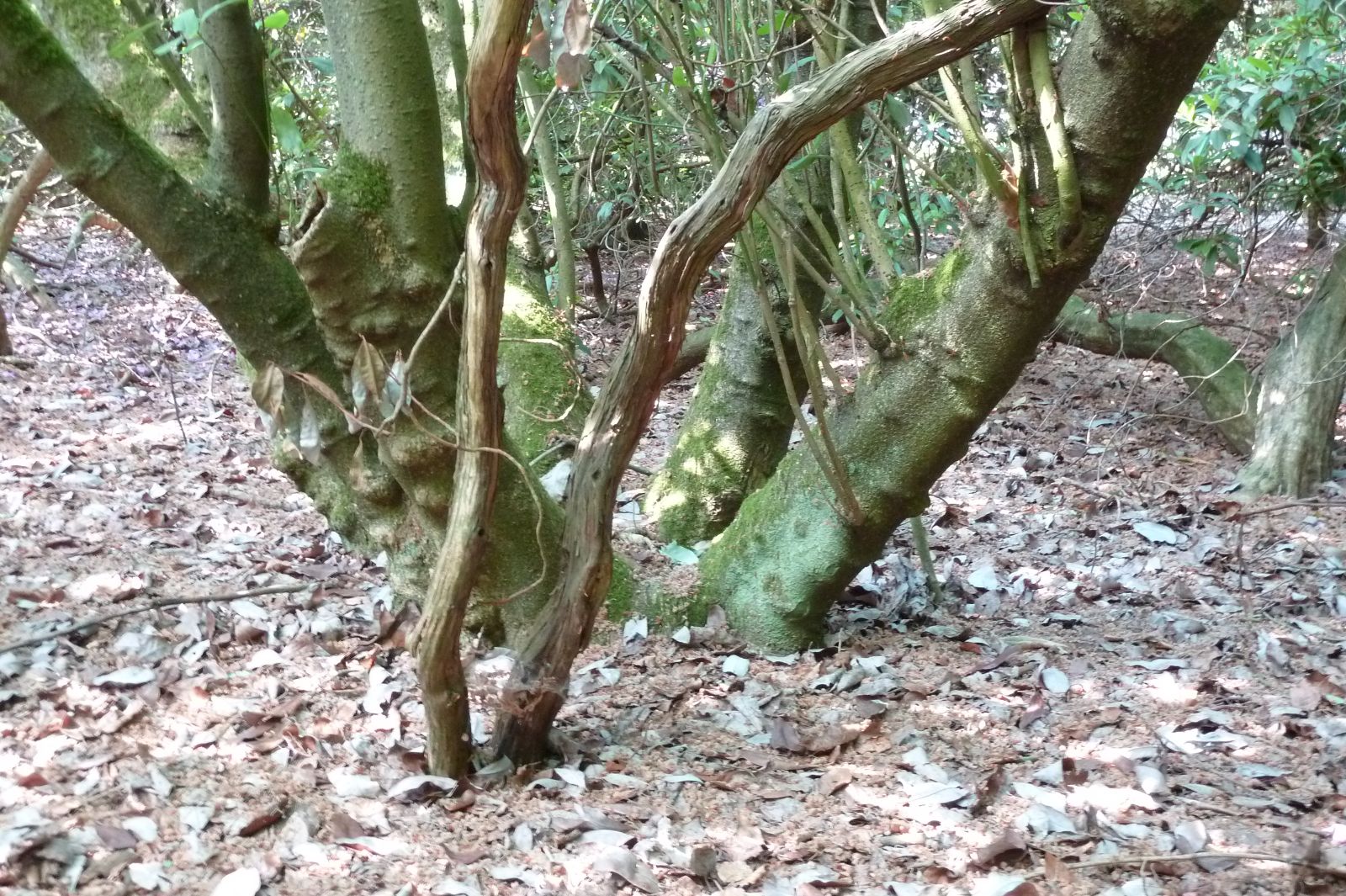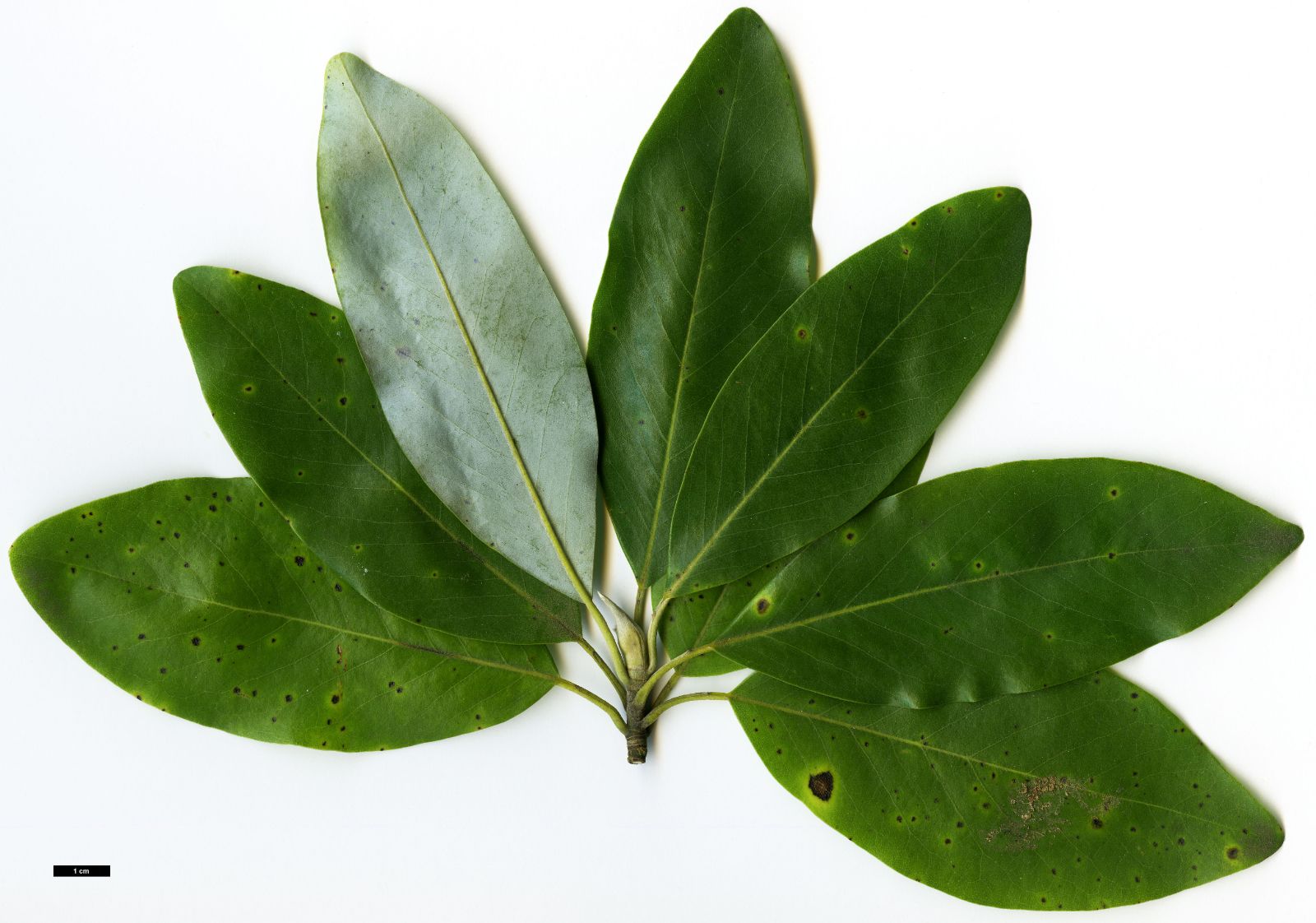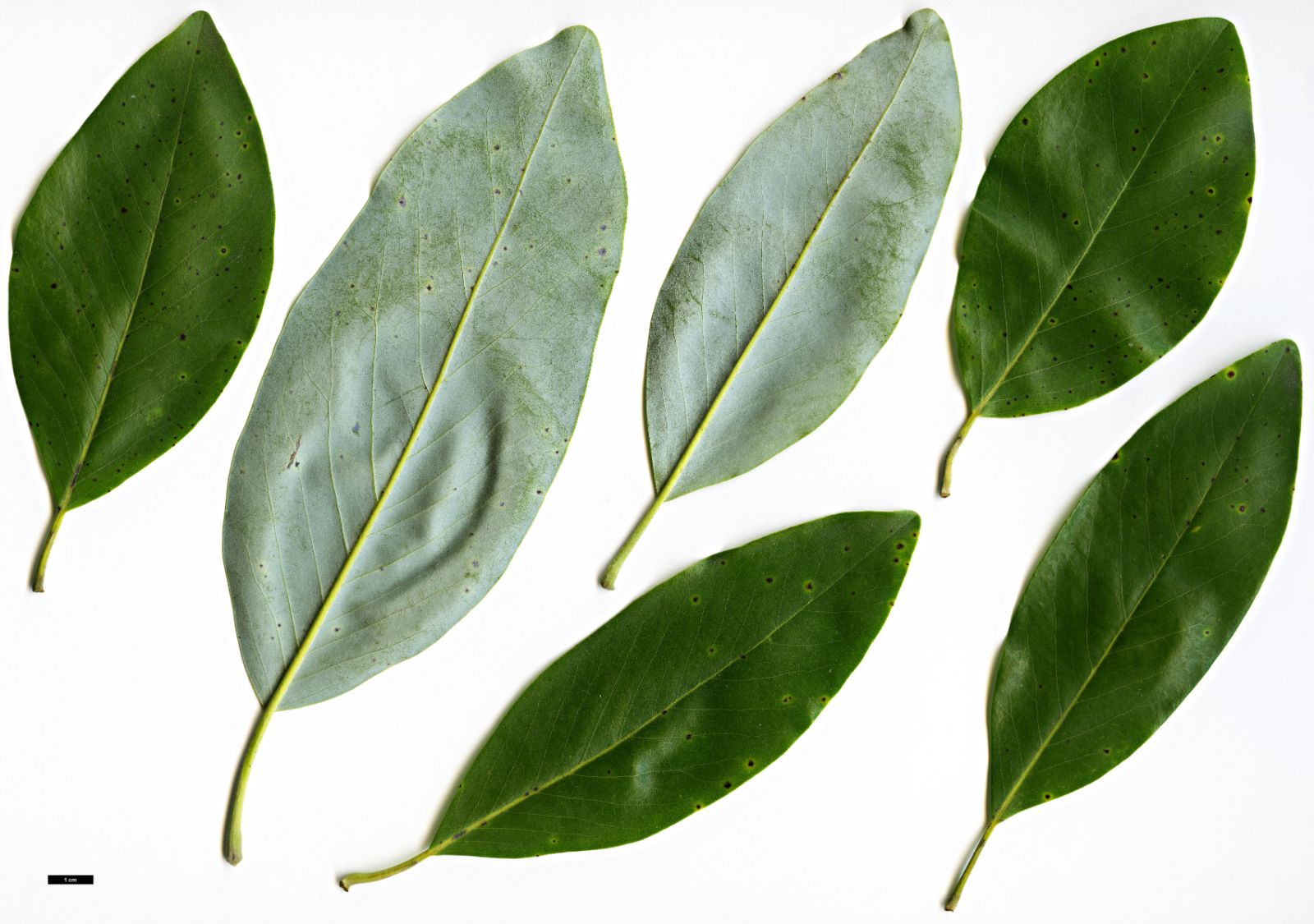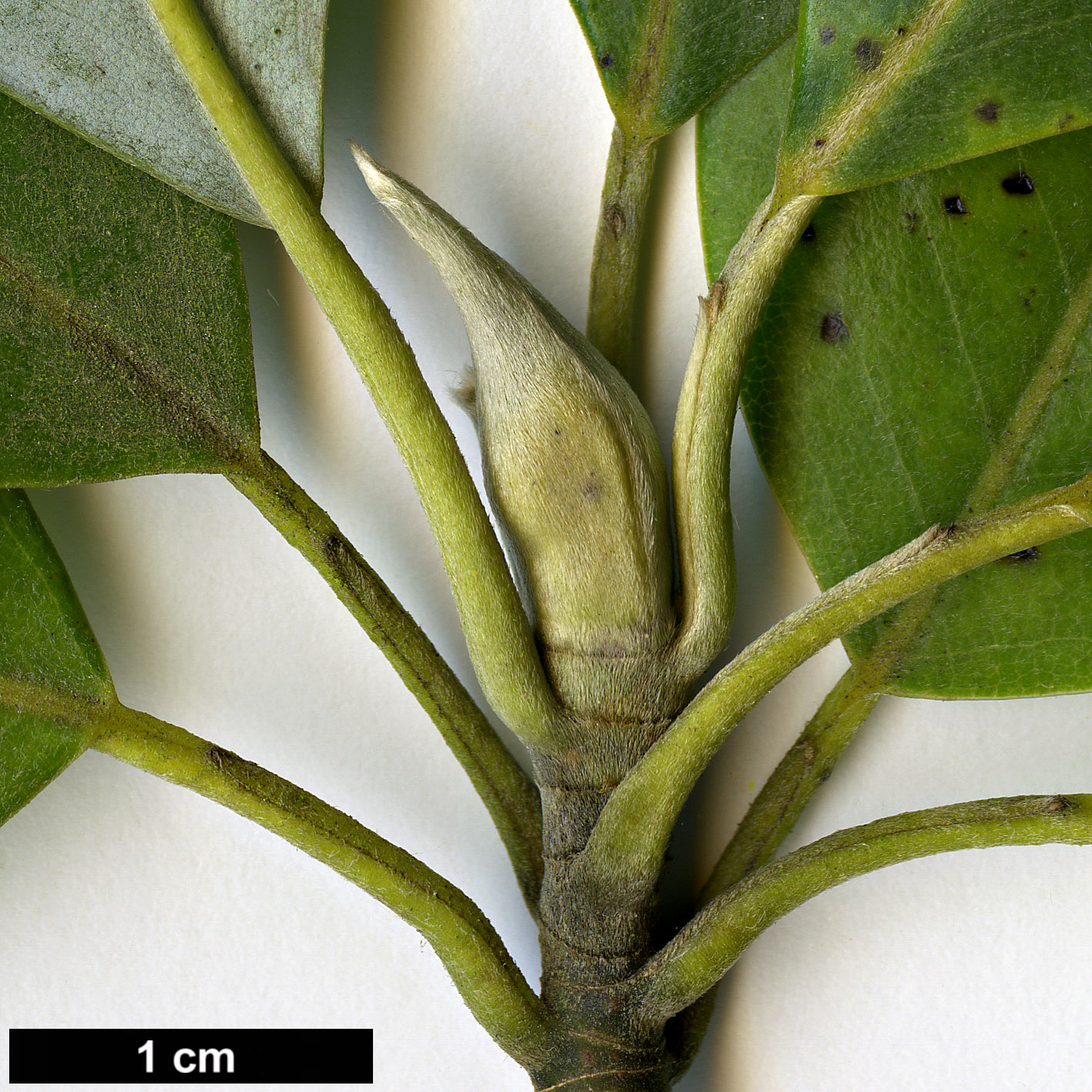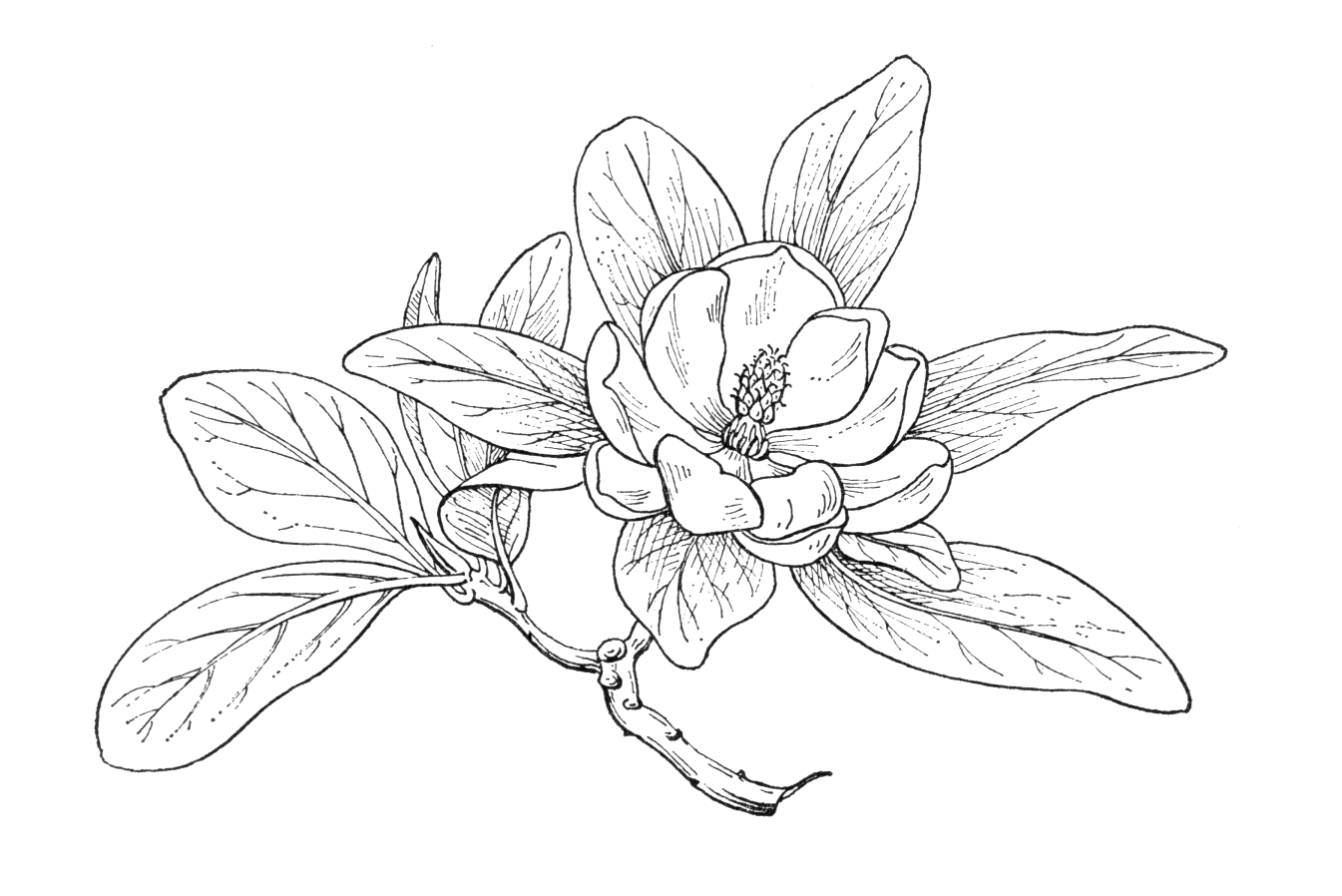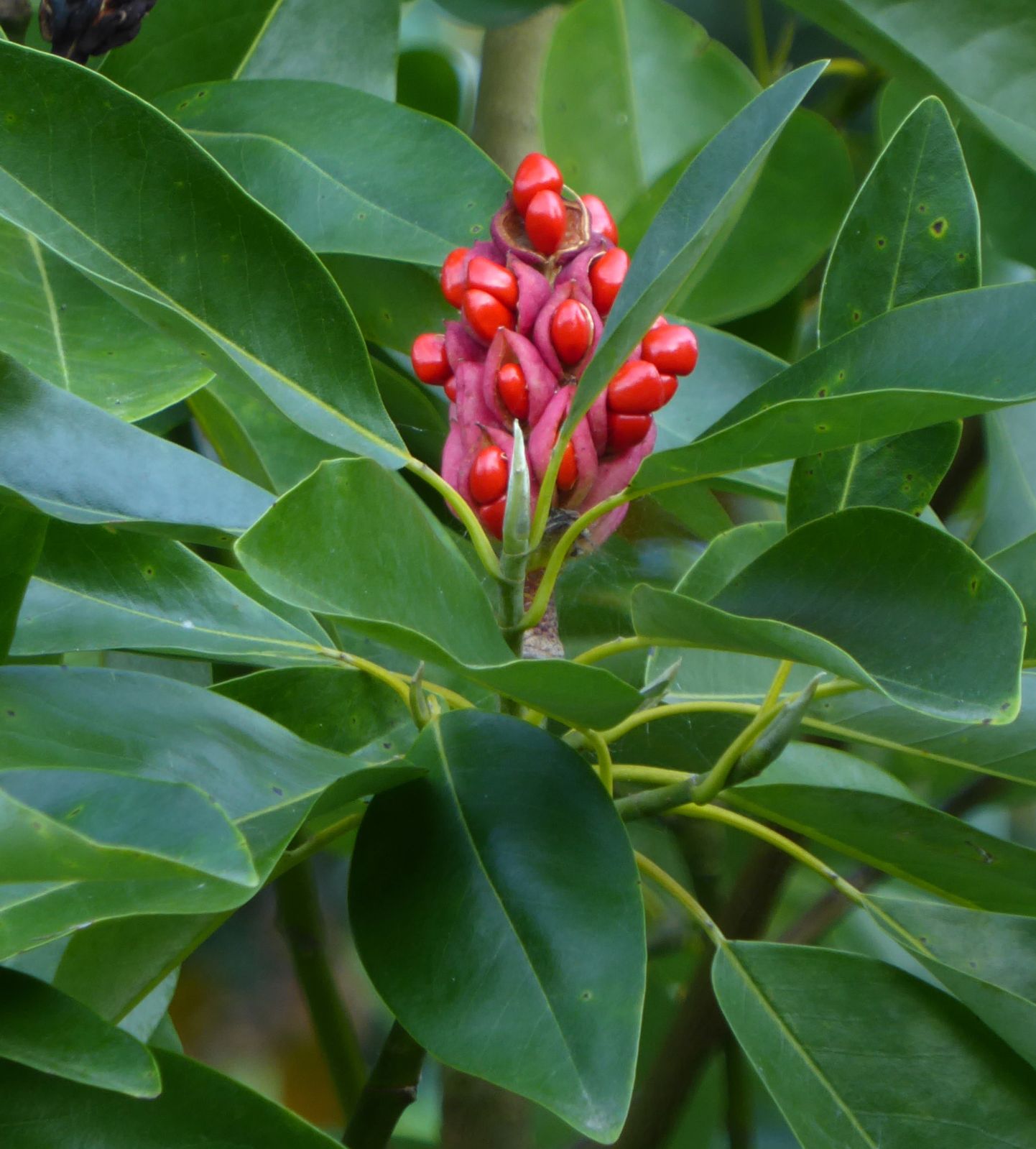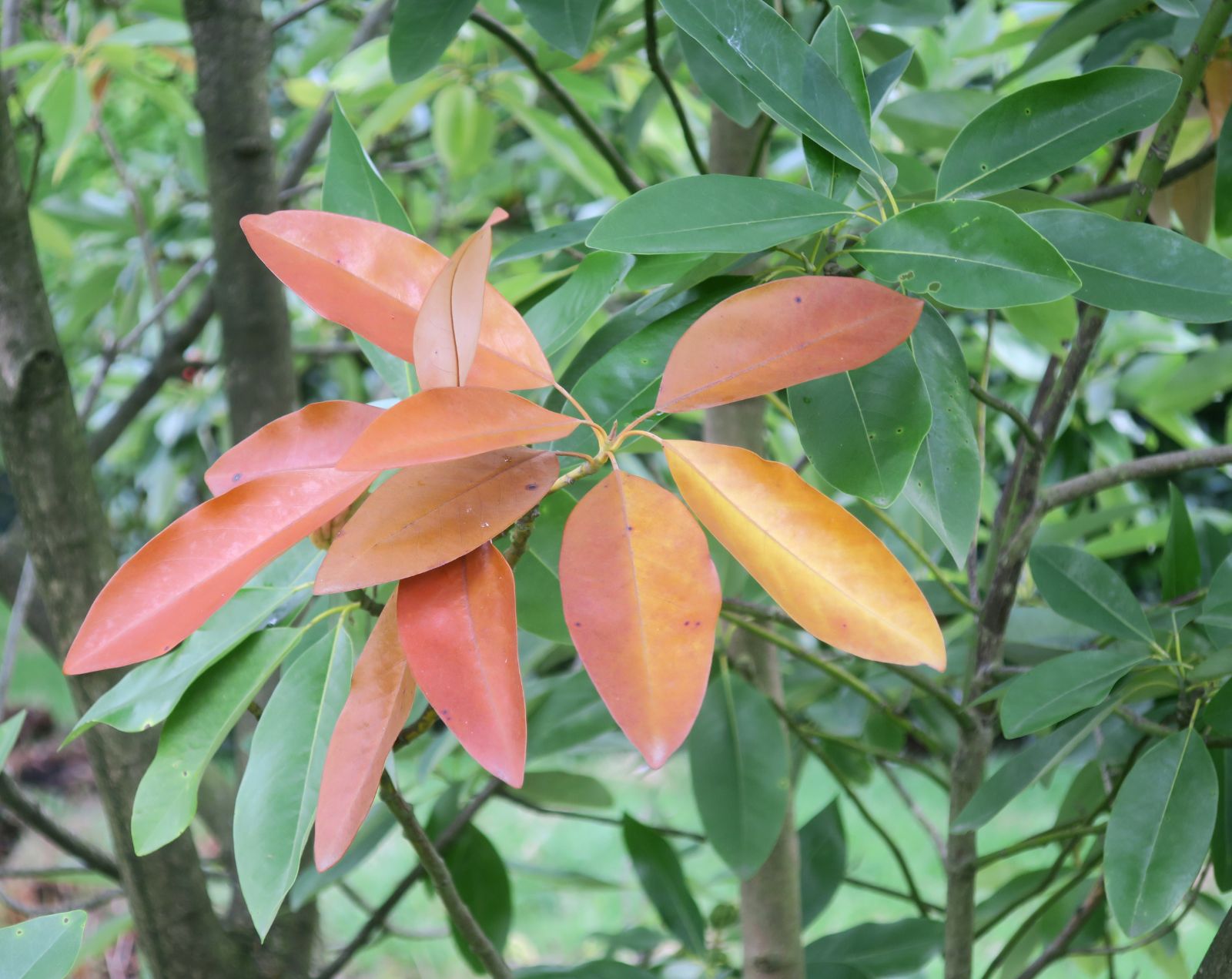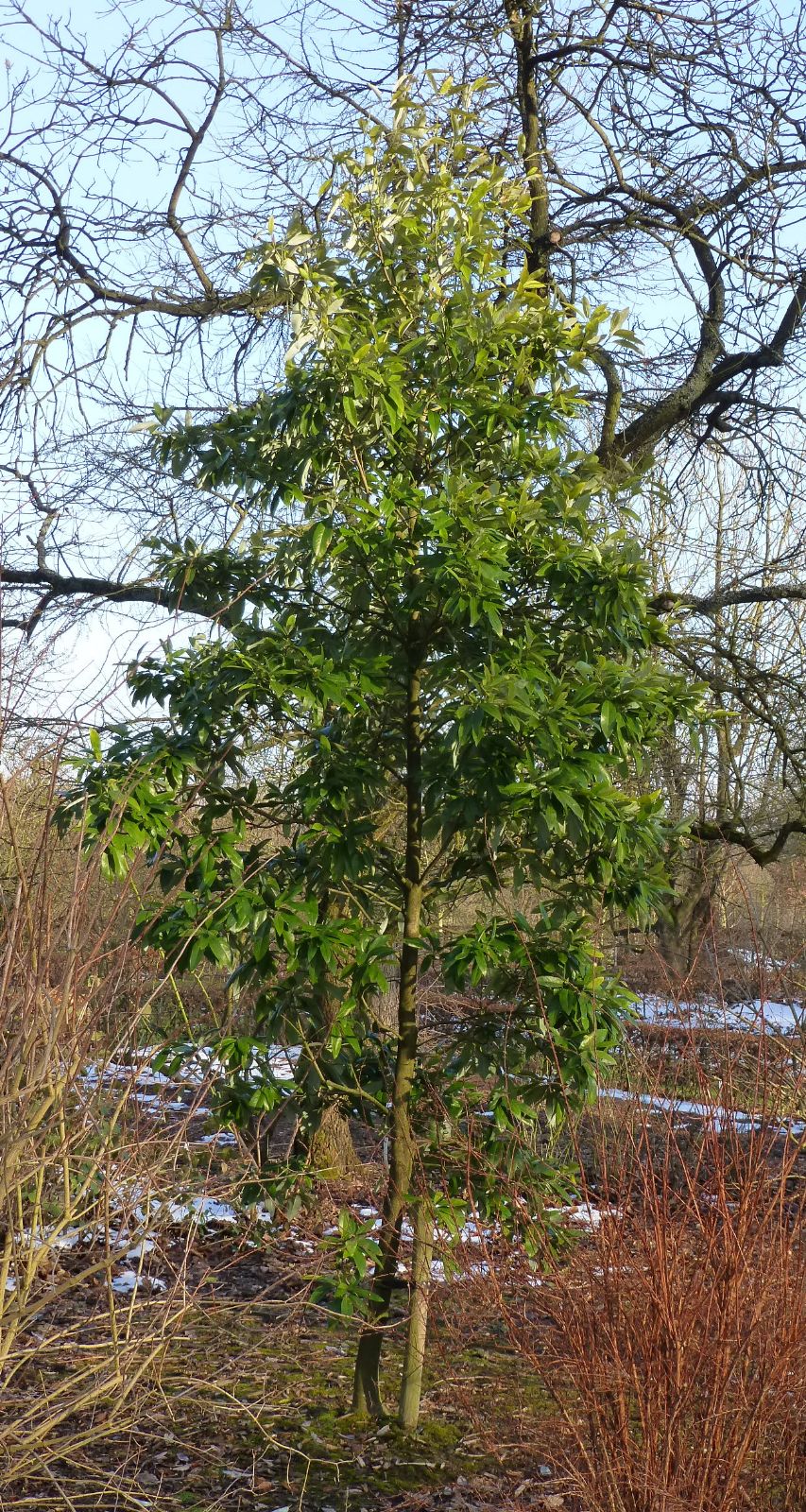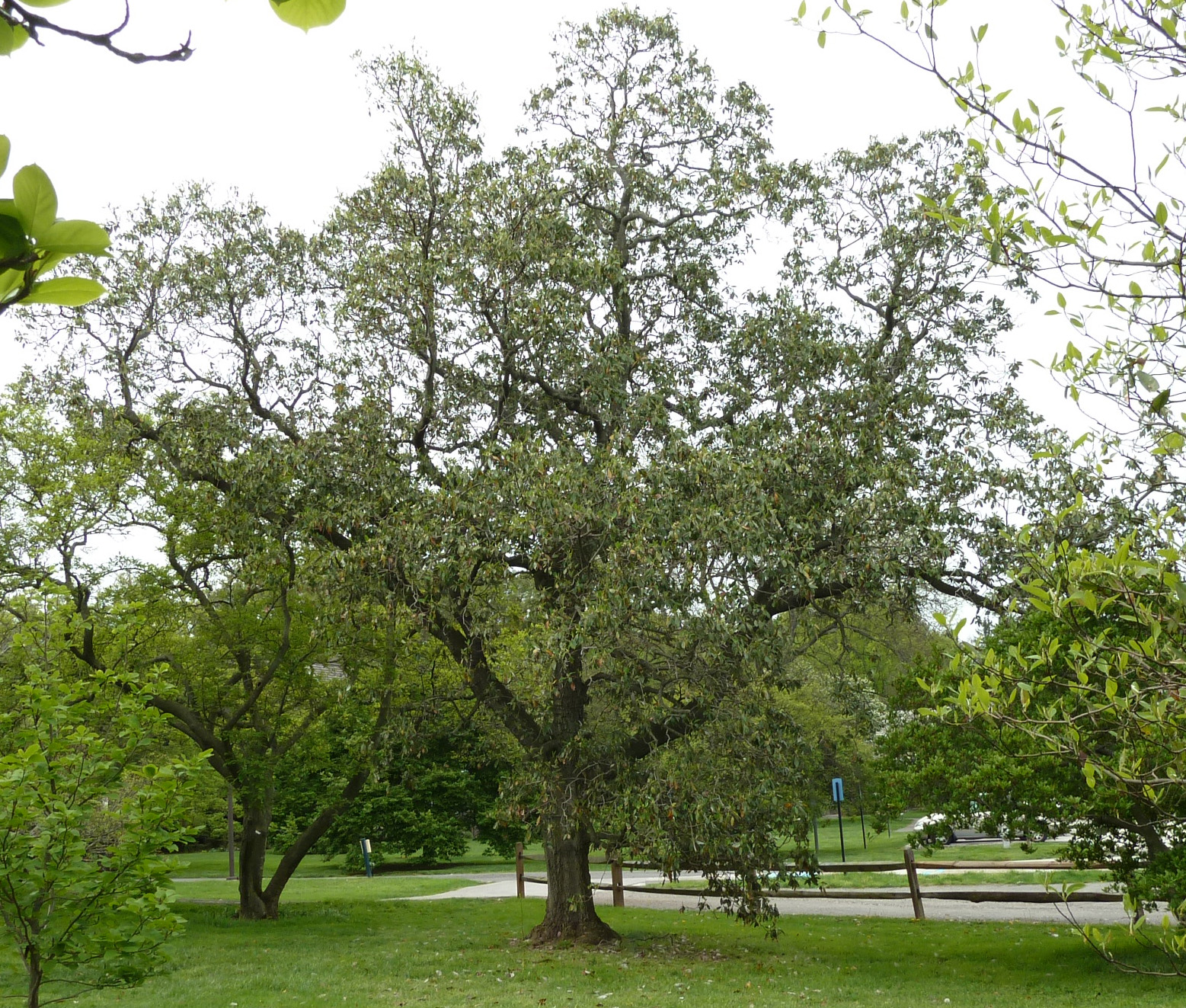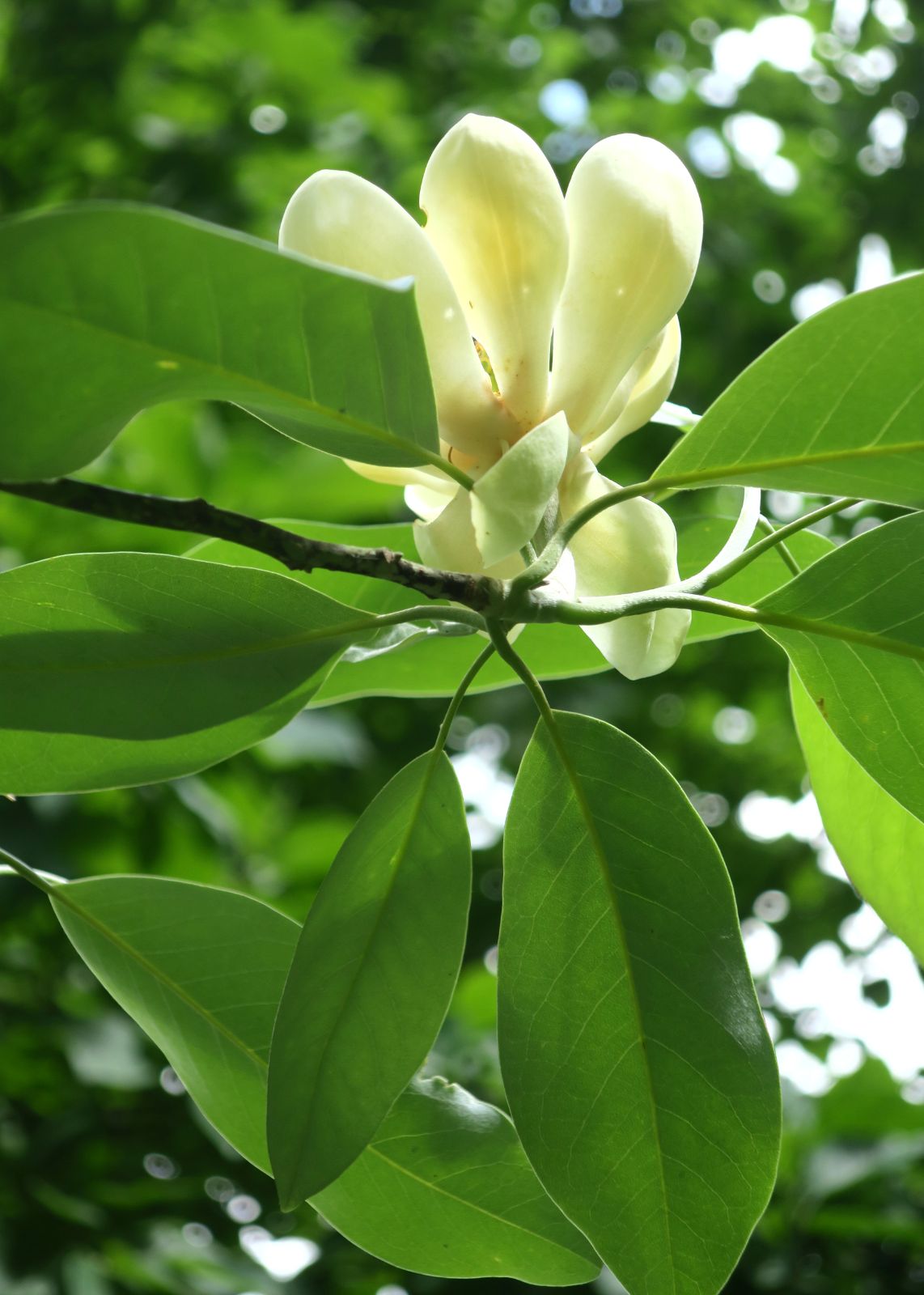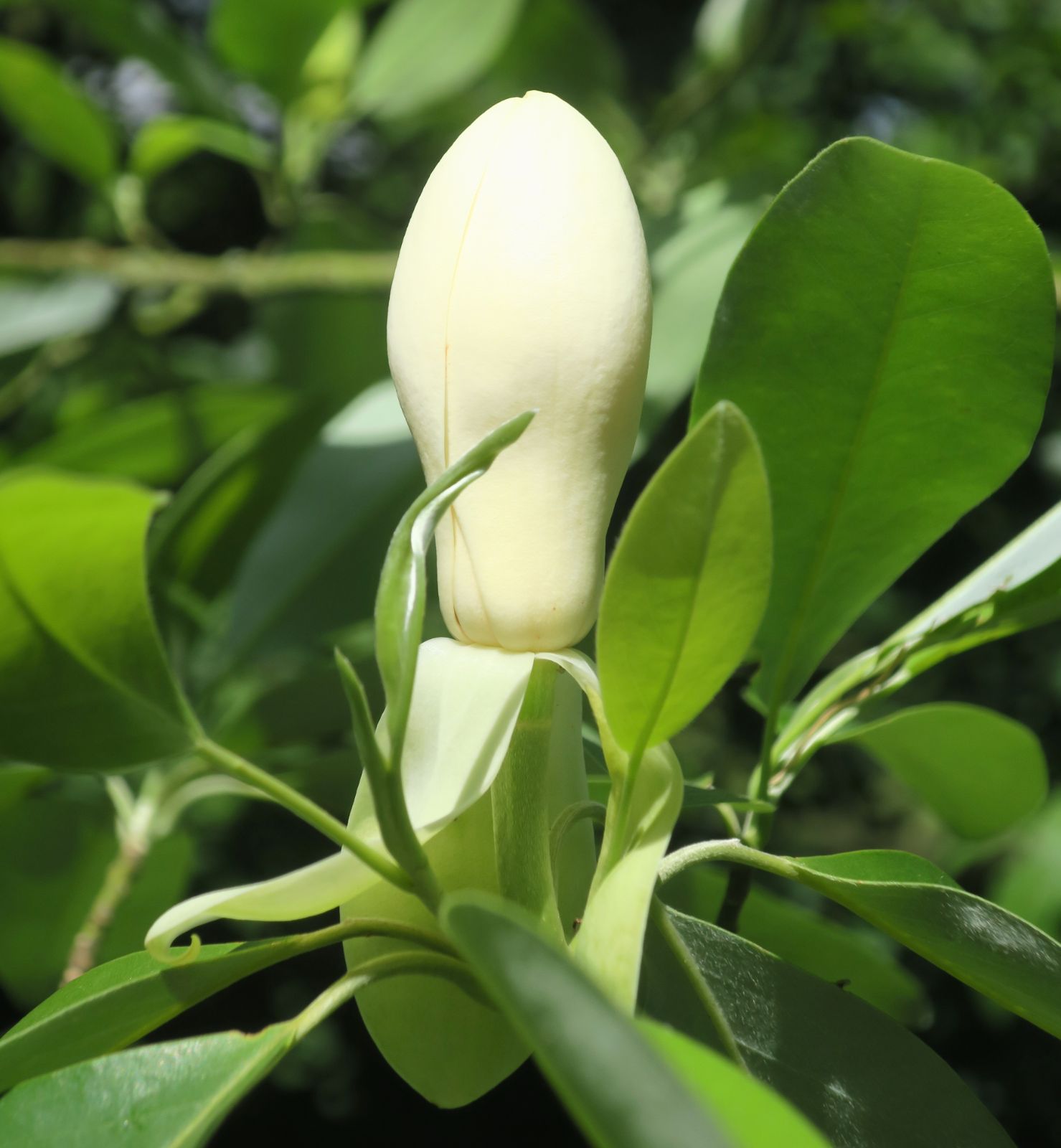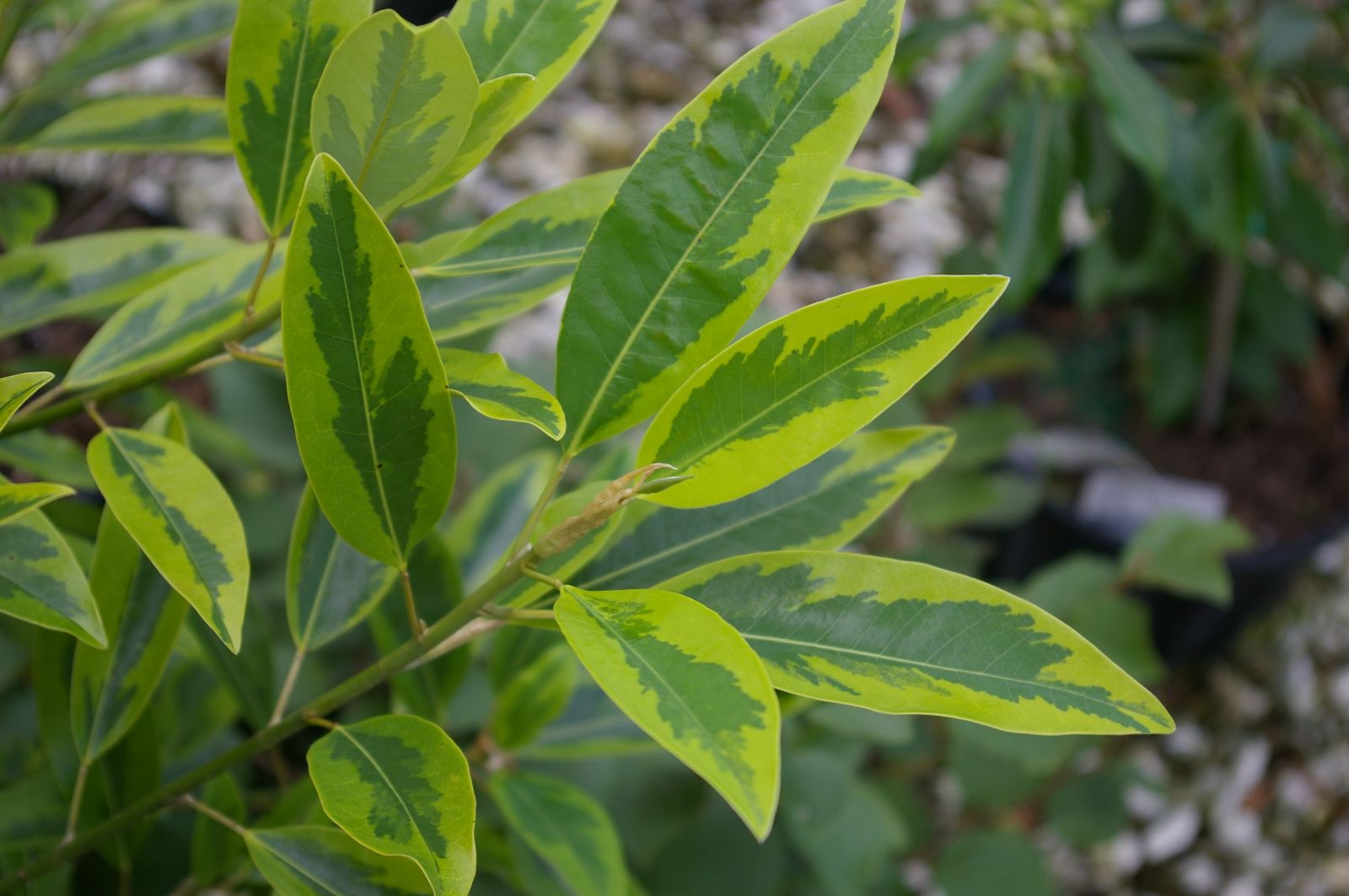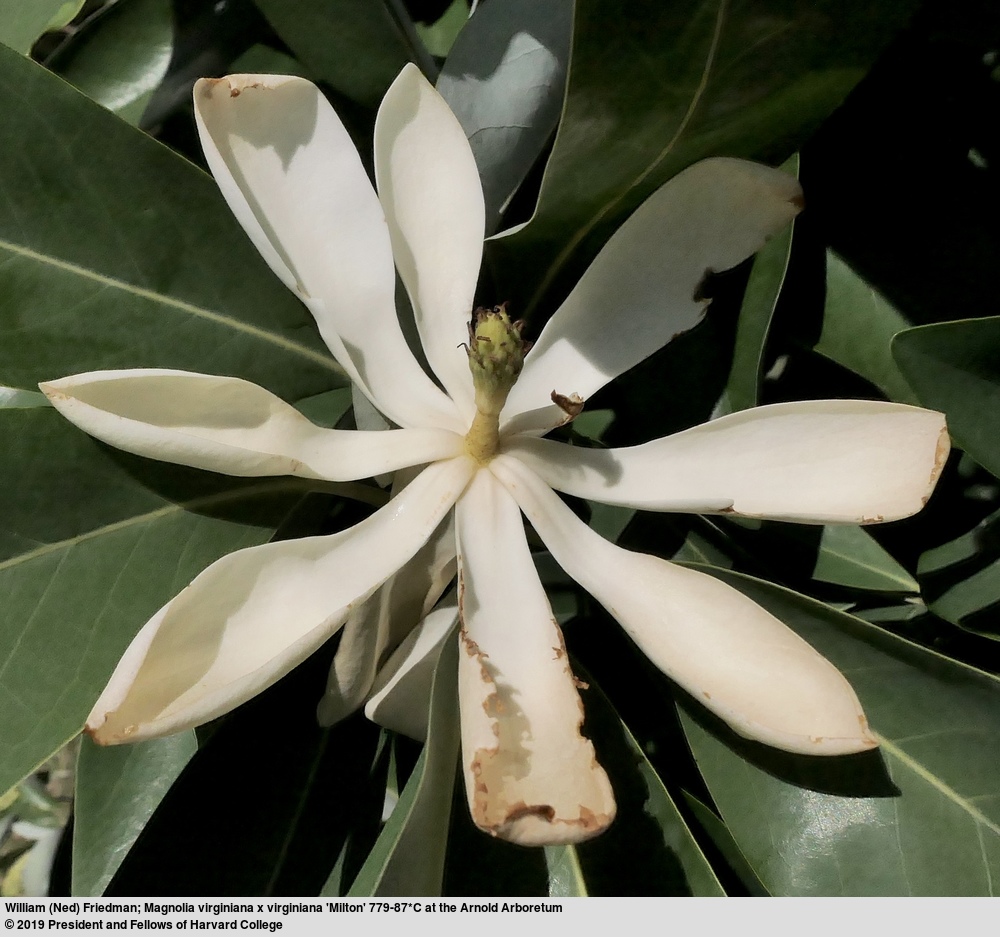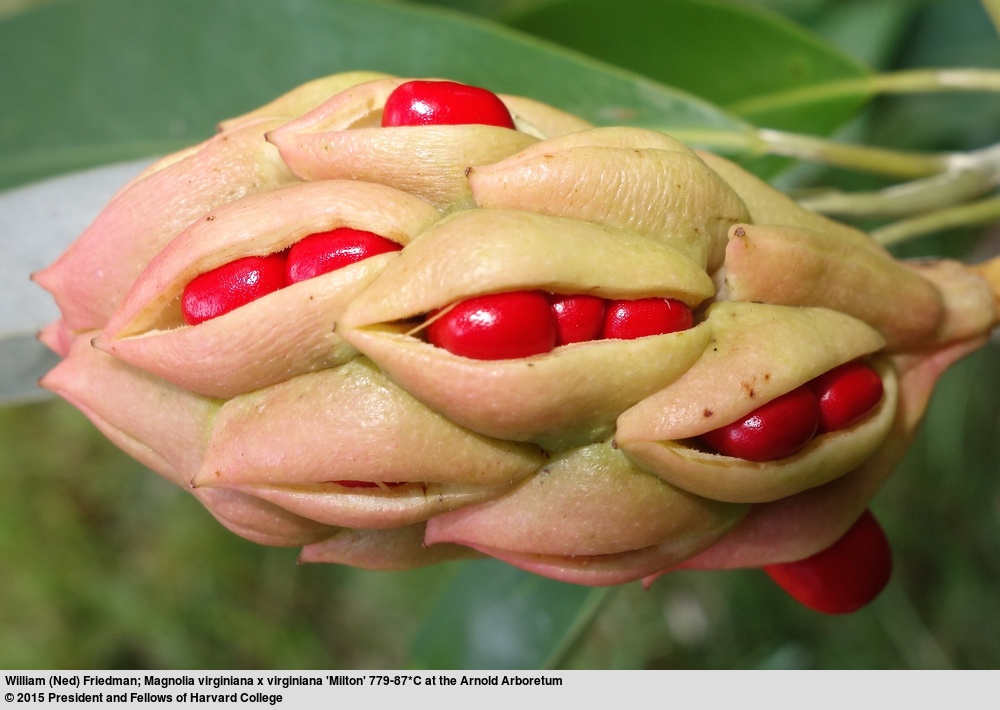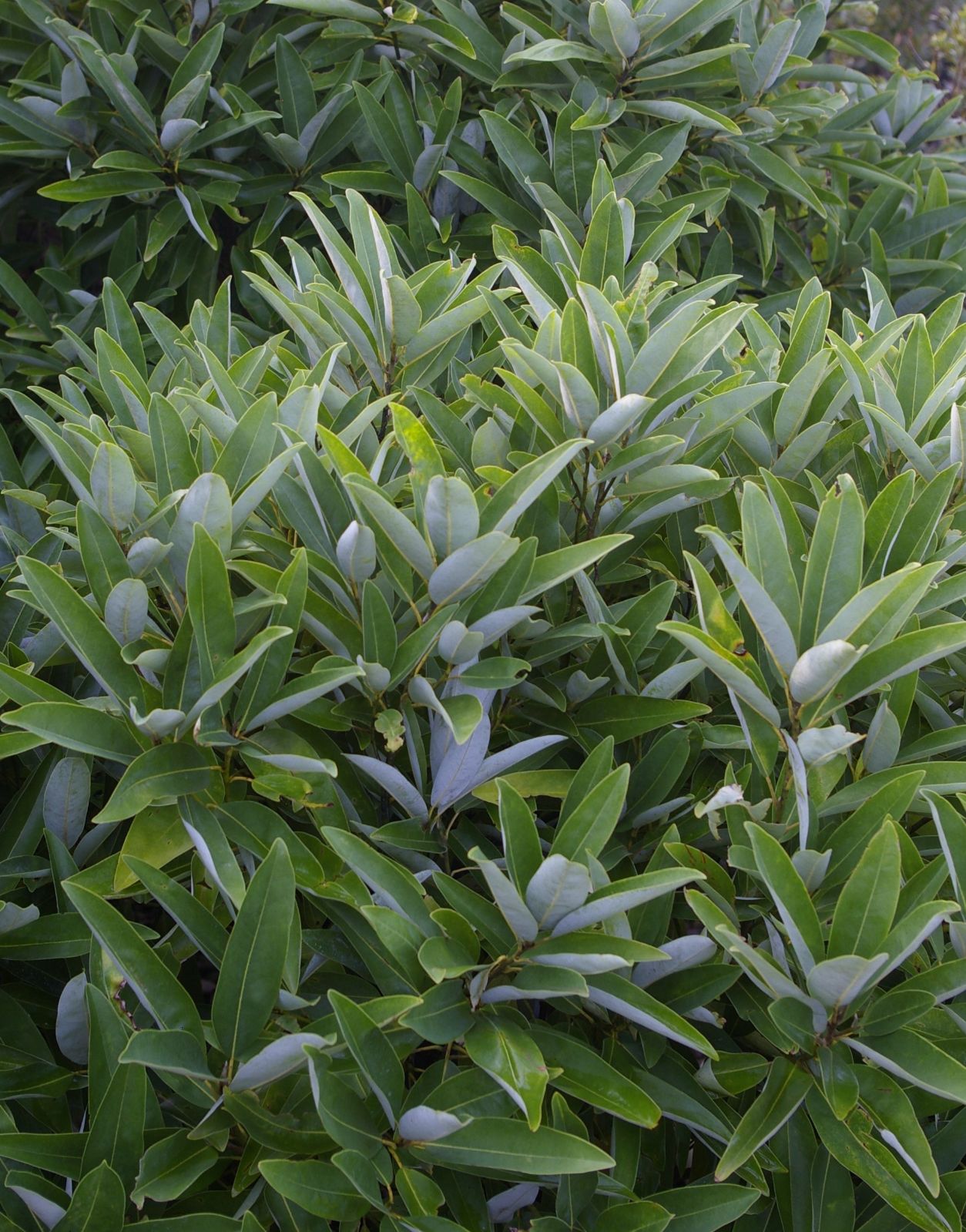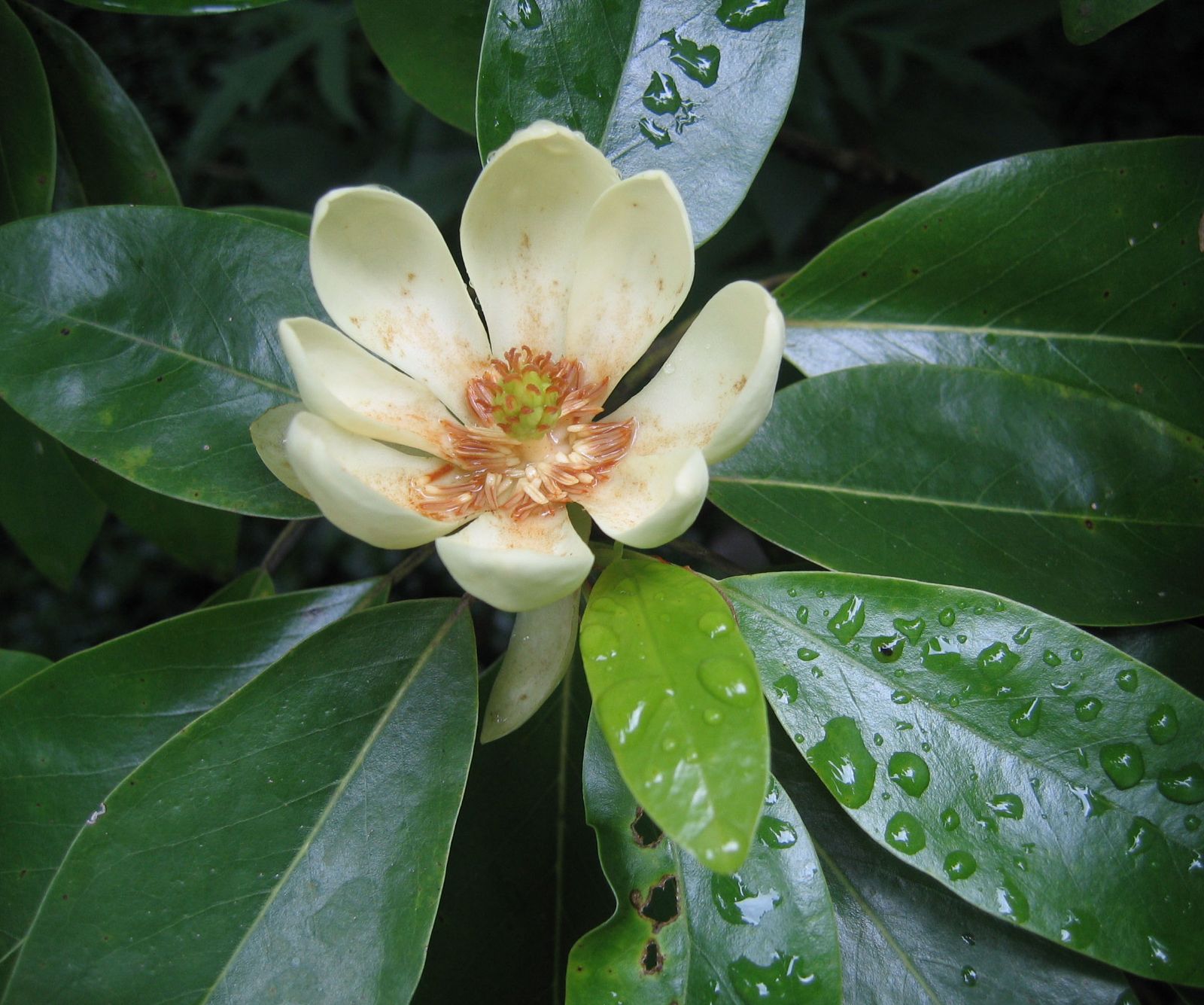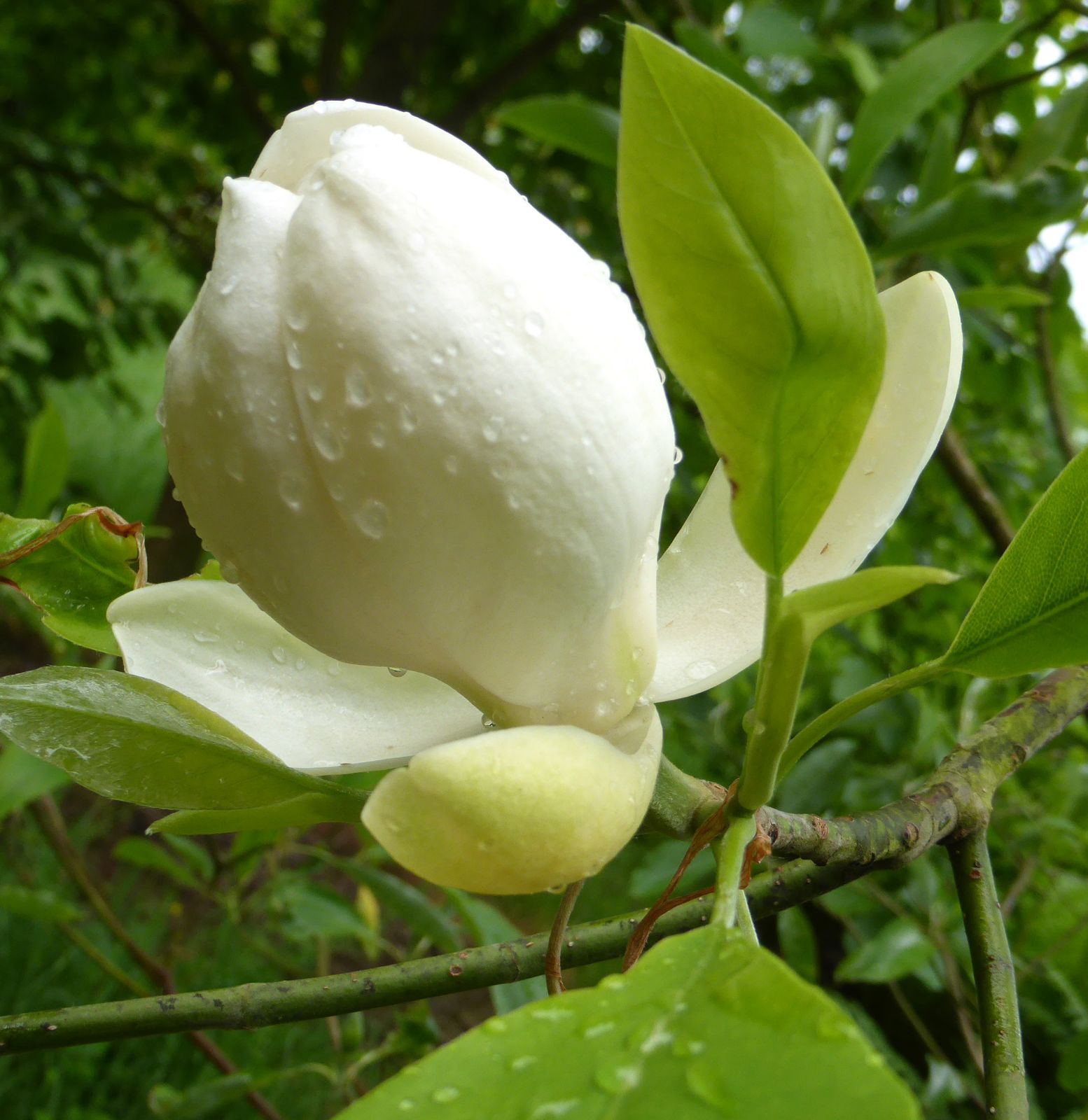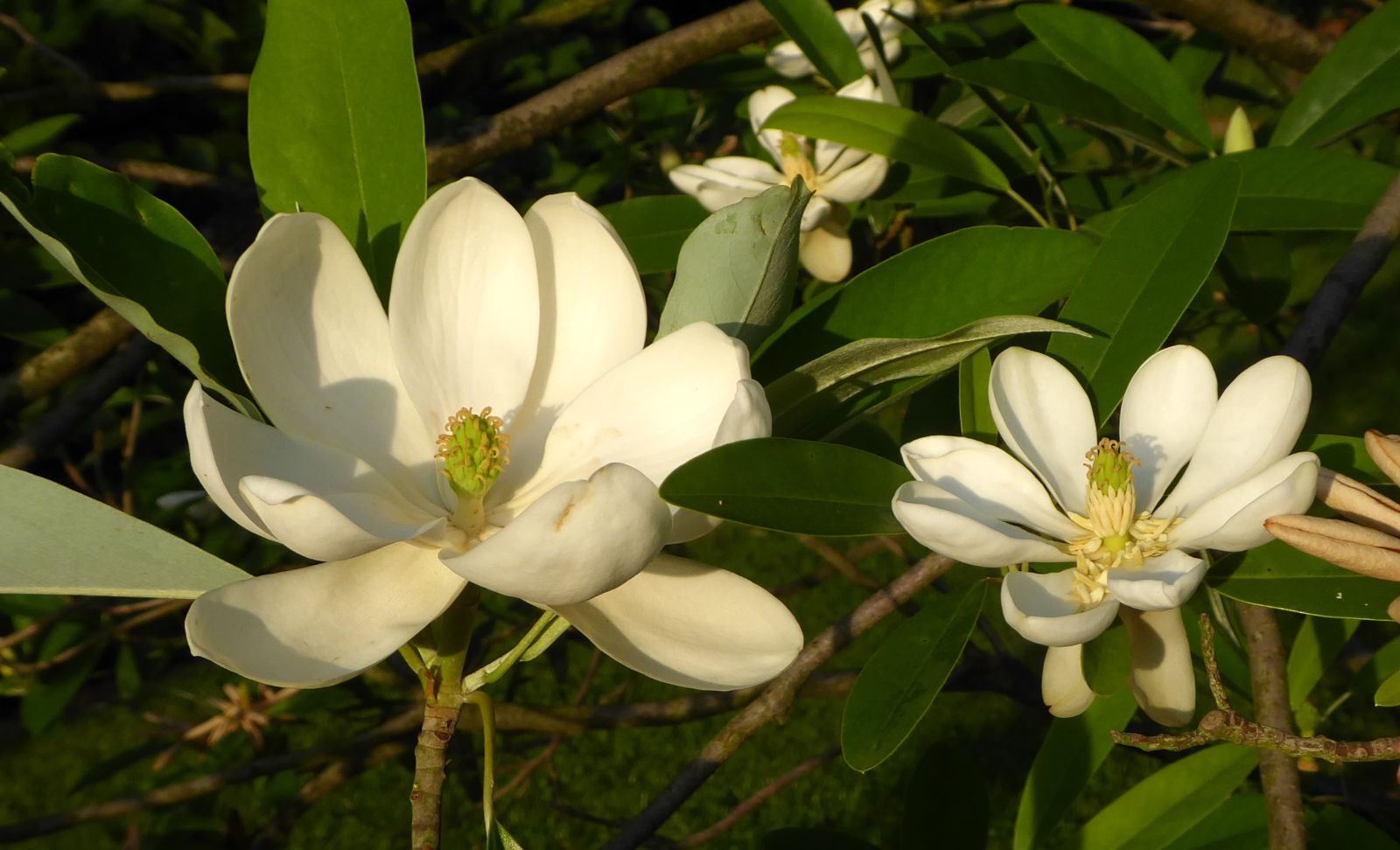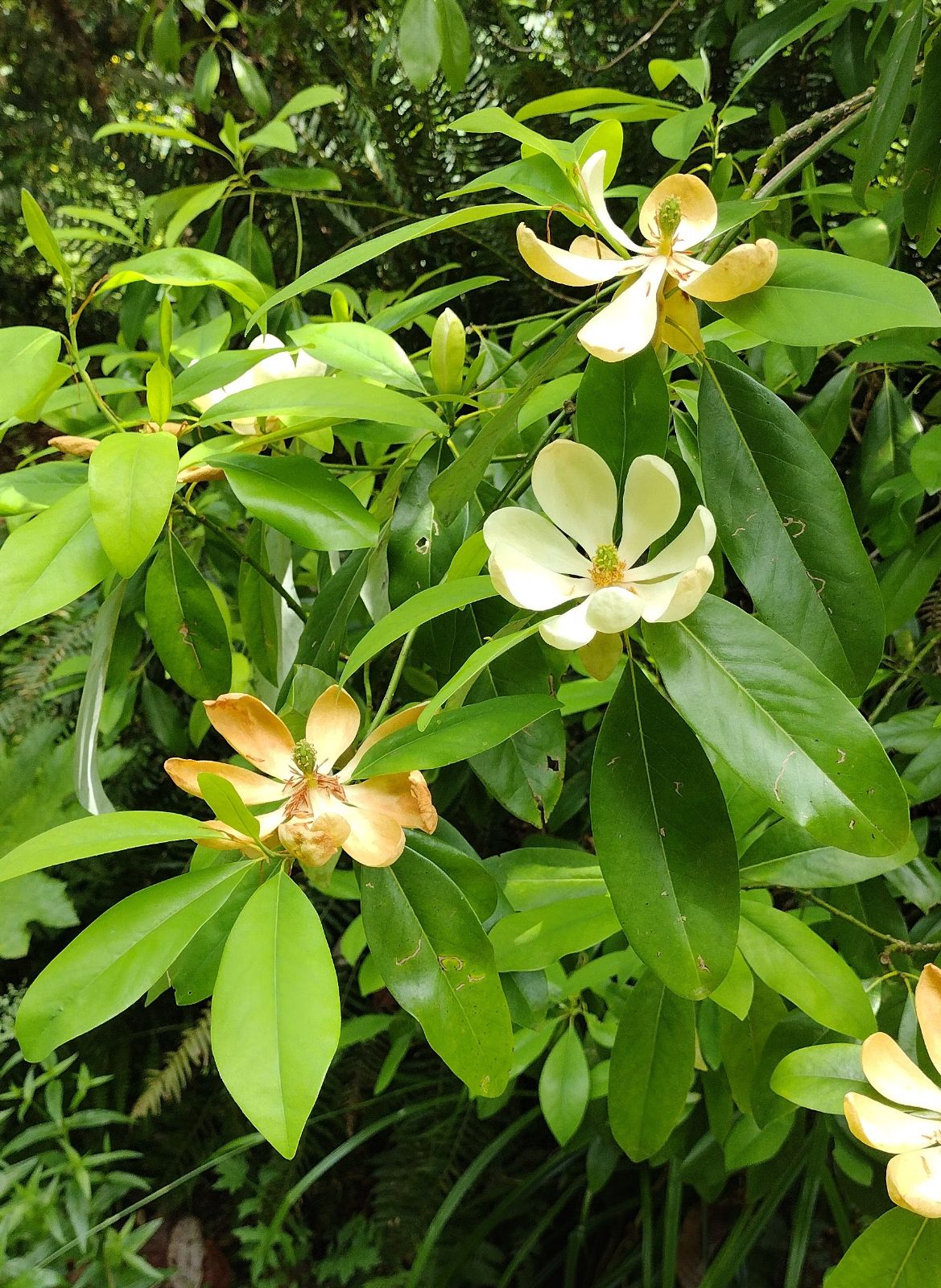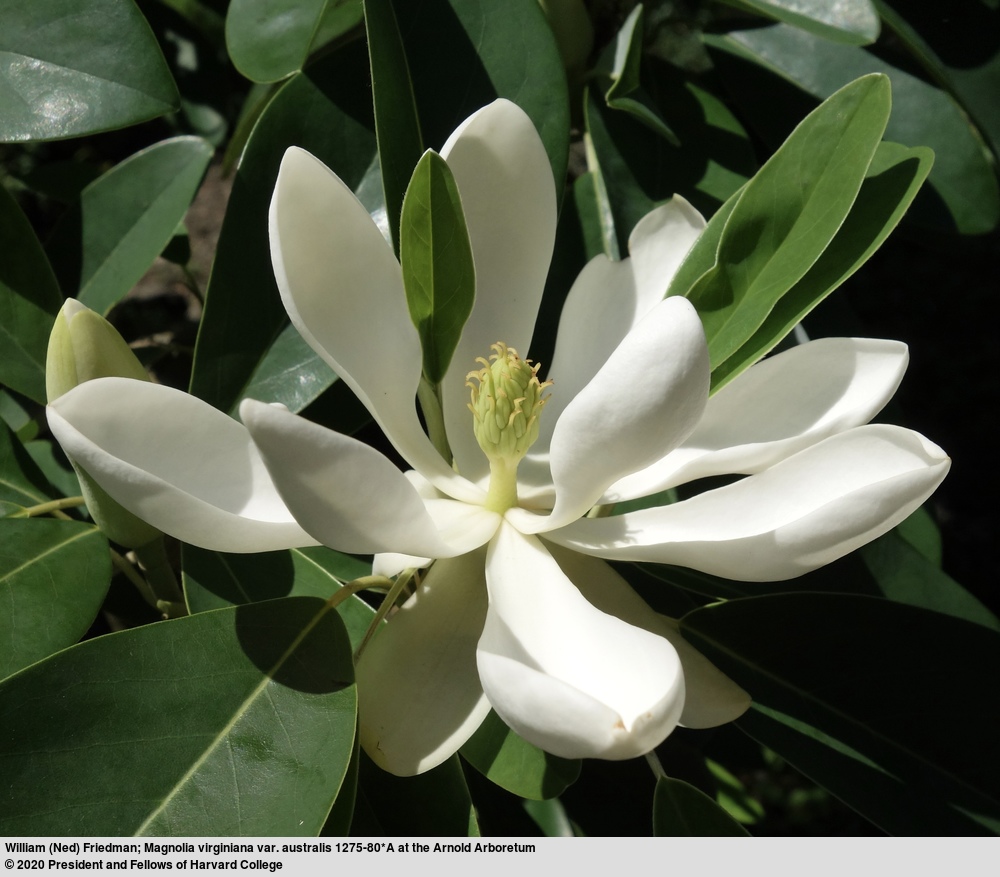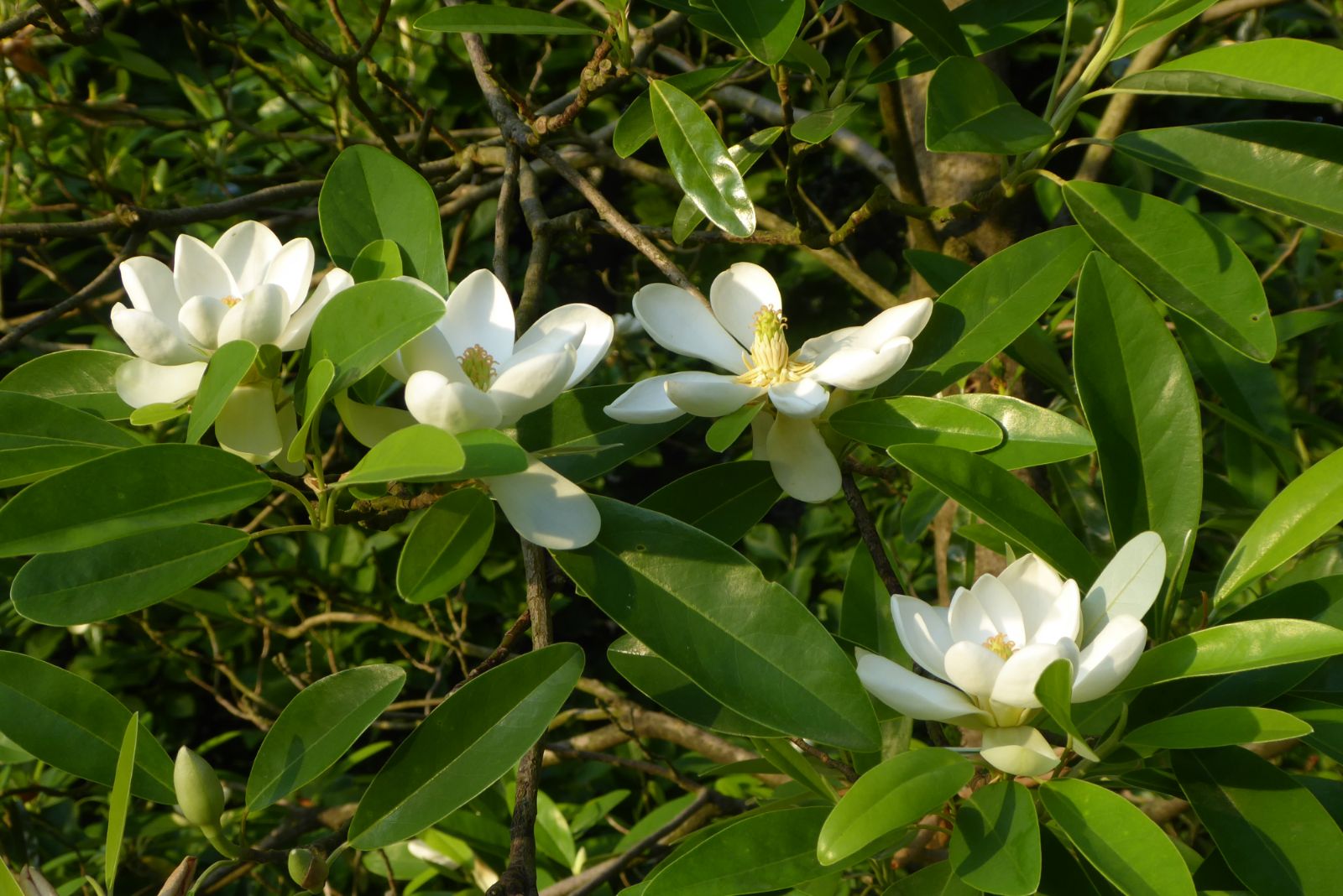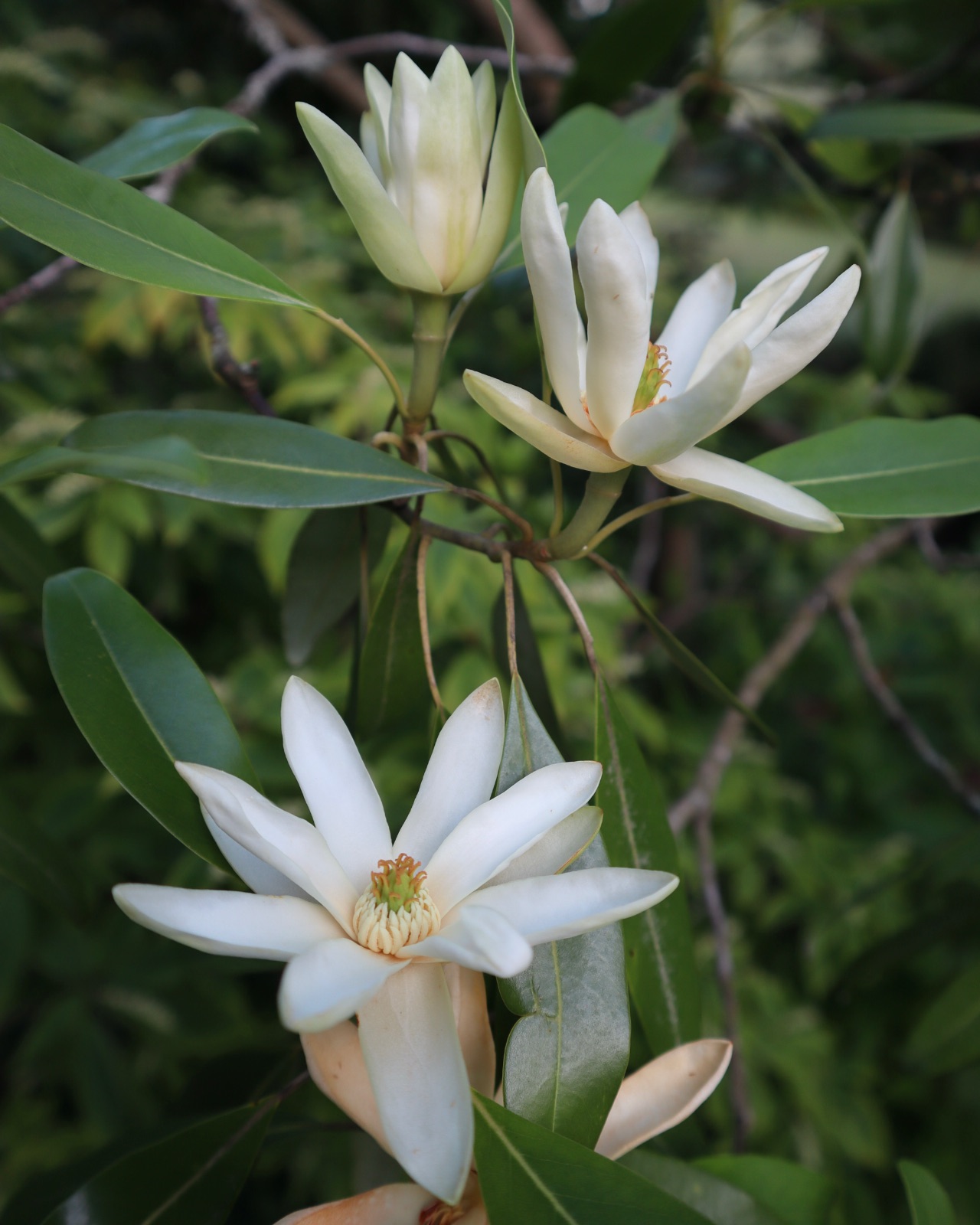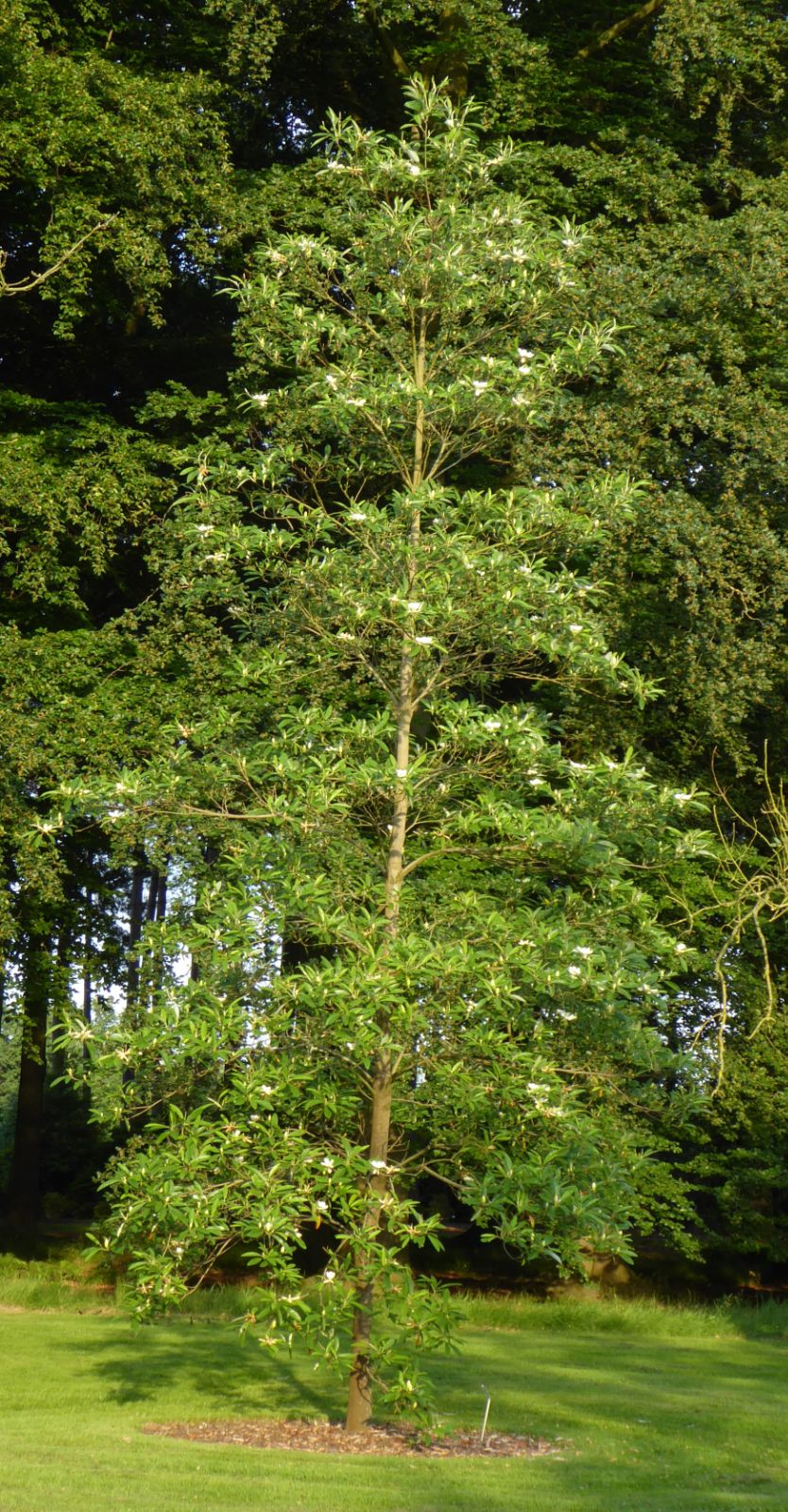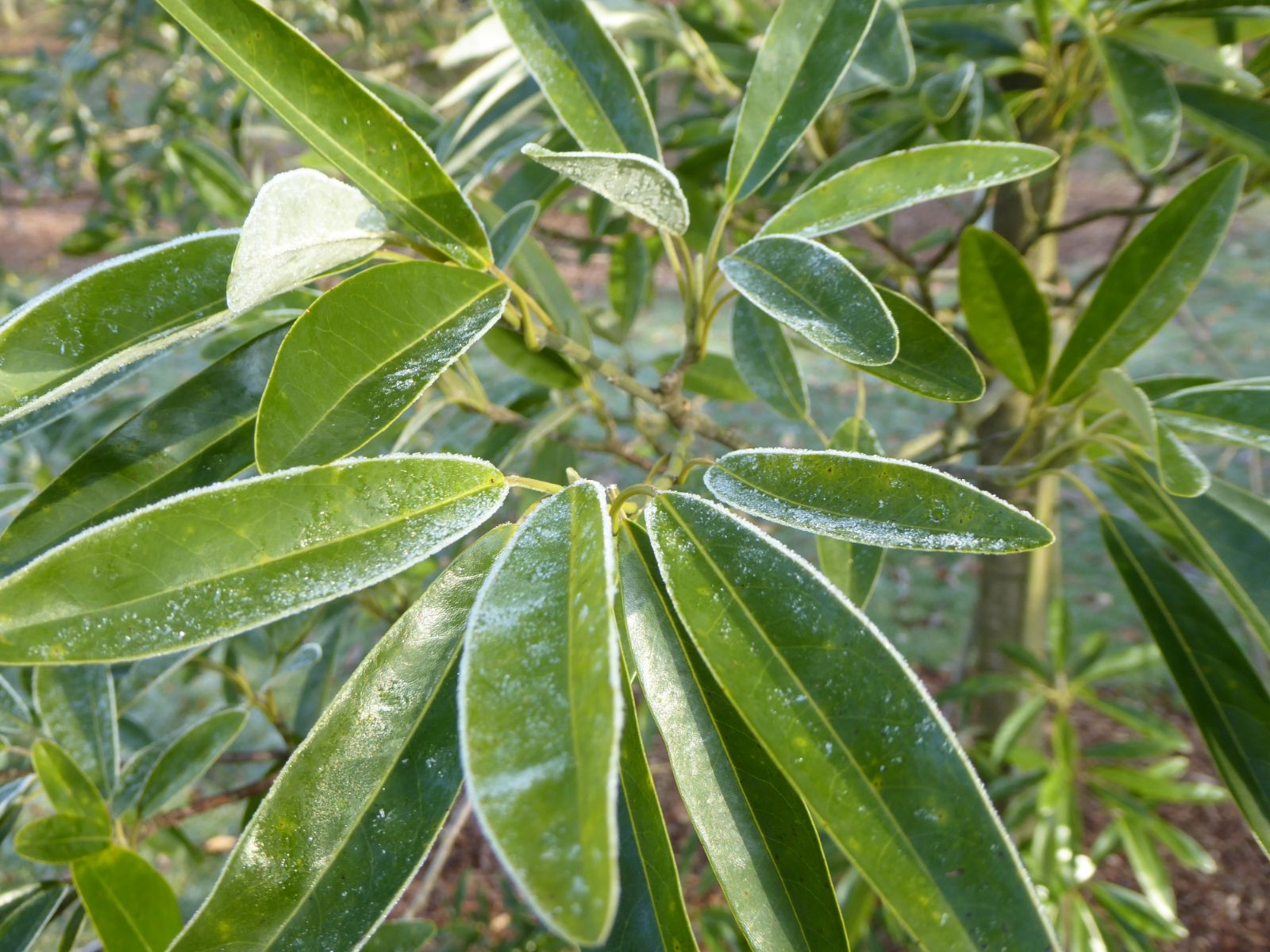Magnolia virginiana
Sponsor
Kindly sponsored by
The Roy Overland Charitable Trust

Credits
Julian Sutton (2022)
Recommended citation
Sutton, J. (2022), 'Magnolia virginiana' from the website Trees and Shrubs Online (treesandshrubsonline.
Infraspecifics
Other taxa in genus
- Magnolia acuminata
- Magnolia × alba
- Magnolia amabilis
- Magnolia amoena
- Magnolia aromatica
- Magnolia biondii
- Magnolia × brooklynensis
- Magnolia campbellii
- Magnolia cathcartii
- Magnolia cavaleriei
- Magnolia caveana
- Magnolia champaca
- Magnolia changhungtana
- Magnolia chapensis
- Magnolia compressa
- Magnolia conifera
- Magnolia Cultivars A
- Magnolia Cultivars B
- Magnolia Cultivars C
- Magnolia Cultivars D
- Magnolia Cultivars E
- Magnolia Cultivars F
- Magnolia Cultivars G
- Magnolia Cultivars H–I
- Magnolia Cultivars J
- Magnolia Cultivars K
- Magnolia Cultivars L
- Magnolia Cultivars M
- Magnolia Cultivars N–O
- Magnolia Cultivars P
- Magnolia Cultivars Q–R
- Magnolia Cultivars S
- Magnolia Cultivars T
- Magnolia Cultivars U–V
- Magnolia Cultivars W–Z
- Magnolia cylindrica
- Magnolia dandyi
- Magnolia dawsoniana
- Magnolia de Vos and Kosar hybrids
- Magnolia decidua
- Magnolia delavayi
- Magnolia denudata
- Magnolia doltsopa
- Magnolia duclouxii
- Magnolia ernestii
- Magnolia figo
- Magnolia floribunda
- Magnolia × foggii
- Magnolia fordiana
- Magnolia foveolata
- Magnolia fraseri
- Magnolia fulva
- Magnolia globosa
- Magnolia × gotoburgensis
- Magnolia grandiflora
- Magnolia grandis
- Magnolia Gresham hybrids
- Magnolia guangdongensis
- Magnolia hookeri
- Magnolia insignis
- Magnolia Jury hybrids
- Magnolia × kewensis
- Magnolia kobus
- Magnolia kwangtungensis
- Magnolia laevifolia
- Magnolia lanuginosa
- Magnolia leveilleana
- Magnolia liliiflora
- Magnolia × loebneri
- Magnolia lotungensis
- Magnolia macclurei
- Magnolia macrophylla
- Magnolia martini
- Magnolia maudiae
- Magnolia nitida
- Magnolia obovata
- Magnolia officinalis
- Magnolia opipara
- Magnolia × proctoriana
- Magnolia × pruhoniciana
- Magnolia rostrata
- Magnolia salicifolia
- Magnolia sapaensis
- Magnolia sargentiana
- Magnolia sieboldii
- Magnolia sinensis
- Magnolia sinica
- Magnolia sinostellata
- Magnolia × soulangeana
- Magnolia sprengeri
- Magnolia stellata
- Magnolia tamaulipana
- Magnolia × thomsoniana
- Magnolia tripetala
- Magnolia × veitchii
- Magnolia × wieseneri
- Magnolia wilsonii
- Magnolia xinganensis
- Magnolia yunnanensis
- Magnolia yuyuanensis
- Magnolia zenii
Shrub or small to medium tree, usually multi-stemmed to 10m (occasionally single-trunked to 28 m in the southern var. australis), evergreen, semi-evergreen or deciduous. Bark dark gray, smooth. Branchlets and foliar buds silky-pubescent, sometimes glabrous. Leaves distinctly alternate, not in terminal whorl-like clusters. Leaf blade oblong to elliptic, ovate to obovate, 6–22 × 2.6–7 cm, somewhat leathery, base cuneate, apex obtuse to acute or rounded to somewhat acuminate; lower surface chalky white to glaucous, glabrous or densely silky-pubescent; upper surface dull or shiny green. Stipules 3–5.5(–6) × 0.3–0.5 cm, the underside brownish puberulent, red-glandular. Flowers fragrant, 5–8 cm across; spathaceous bracts 2, outer bract silky-pubescent beneath, inner bract nearly glabrous, red-glandular; tepals creamy white, red-glandular, outermost segments reflexed, greenish; stamens (32–)63–90(–102), 5.5–11 mm; filaments white; carpels (9–)19–33(–50). Fruit ellipsoid to nearly globose, 2–5.5 × 1.5–3 cm; follicles short-beaked, glabrous. Seeds somewhat globose to lenticular, 5 mm, aril red. Diploid 2n=38. (Meyer 1997).
Distribution Cuba NW, one known site United States Massachusetts south to Florida, west to E Texas
Habitat Swamps, wet woods, savannahs; mainly in coastal plain and lower piedmont; 0–540 m.
USDA Hardiness Zone 5-10
RHS Hardiness Rating H5
Conservation status Least concern (LC)
Taxonomic note Variation in this species poses a problem. At first sight, the typical, taller, single-trunked, evergreen southern forms and shorter, often multistemmed, deciduous northern forms (Meyer 1997) seem deserving of names to distinguish them. Sargent’s var. australis has often been used for these typical southern plants: his description (Sargent 1919) includes areas in which it occured, but does not designate a type specimen, something not often mentioned in the subsequent literature although noted by Zale (2009). On the other hand, these forms intergrade, especially in the Carolinas, and most workers seem to agree that it is difficult precisely to delineate varieties on morphological grounds (Meyer 1997, Zale 2009, Azuma et al. 2011). Some have refused to accept any infraspecific taxa (Spongberg 1976; Meyer 1997). A molecular phylogenetic analysis of chloroplast DNA sequences from 133 individuals from 28 populations across the range of the species strongly supported the existence of two distinct taxa, the more southerly one matching the supposed distribution of var. australis (Azuma et al. 2011). However, this southern genetic grouping also includes the recently discovered Cuban population, which had been described as M. virginiana subsp. oviedoae Palmarola, M.S.Romanov & A.V.Bobrov, with narrower, lanceolate, evergreen leaves and smaller flowers (Palmarola-Bejerano, Romanov & Bobrov 2008). A set of morphological characters which closely matches the genetic goupings is still needed if the concept of var. australis is ever to be really useful. Our uncomfortable compromise here is to describe the species as a whole rather than attempt to describe var. virginiana fully and precisely, then to outline the differences between the forms under var. australis.
Any discussion of the Sweet Bay seems to become snagged on the complex variation patterns across its wide, low-altitude range in eastern North America (see taxonomic note above). Tree or shrub, deciduous or evergreen, what all forms share is their sweetly scented white flowers in summer, white or glaucous backs to their leaves, and their wetland habitat. Magnolia virginiana is a member of Section Magnolia, along with M. grandiflora and its Mexican relatives. M. grandiflora (even more widely grown but less cold tolerant) differs in its usually larger flowers, in the rufous hairs on the leaf backs, which are not glaucous, and in always being evergreen (M. virginiana may be fully or semi-evergreen, or deciduous).
This was a species well known to Native American peoples of the area. The Houma took decoctions of leaves and twigs for colds and chills, and to ‘warm the blood’, while the Rappahannock inhaled volatiles from the bark and leaves as a mild hallucinogen (Moerman 2021). Early settlers used bark extracts to treat rheumatism, coughs and colds, also steeping the fruit in spirits. The soft, aromatic, straight-grained wood is easily worked and much used for veneer and containers (Priester 1990). The species was first described scientifically from material cultivated in Europe, this apparently being the first Magnolia species grown there. By 1688 it was in the extraordinary collection of plants assembled at Fulham Palace by Henry Compton, Bishop of London, probably collected by John Bannister, whom Compton had sent to Virginia as a missionary (Treseder 1978). The type species of the genus, Linnaeus’ specific epithet of 1753 marks its place of origin.
The flowers have a sweet, fruity scent, and can make a fine sight in North American gardens. Sargent (1919) made the bold claim that ‘in all North America there is not a more delightful shrub to plant in the garden, or one that will give larger returns in beauty and fragrance’. However, in Britain’s cool, maritime climate the flowers rarely make much visual impact. They last for two days and are certainly pollinated by beetles. Bees also visit, forcing their way in to collect pollen; the extent to which they bring about pollination is contested (Thien 1974; McDaniel fide Treseder 1978; Zale 2009). In its native habitats M. virginiana flowers from June until mid-August; in the British Isles, even in southern areas, it flowers rather sporadically during August and September. Fruits are seldom seen in the British Isles but in North America they are an ornamental feature, crimson with bright red seeds.
This is a plant of moist places, where it sometimes forms a small thicket by suckering. Acer rubrum, Persea borbonia and Gordonia lasianthus are frequent companions. In gardens a sunny position on humus-rich, moist but well drained soil is ideal, although it will survive some waterlogging. Normally found on acidic soils, it tolerates lime in gardens (Treseder 1978). It ‘does quite well’ on heavy clay in Missouri (Missouri Botanical Garden 2021).
Despite its early introduction, it is not a particularly common plant in European gardens, partially eclipsed by M. grandiflora. The usual British experience is of rather weak growth; it is generally seen as a straggly shrub or small tree increasing slowly each year. A range of forms has been tried here, but none has been entirely successful – to make really strong growth Magnolia virginiana seems to need hot summers. Larger (inevitably older) specimens are recorded in some British gardens (The Tree Register 2021). Examples include a semi-evergreen tree of 9 m × 136 cm (2011) on the former Knap Hill Nursery site, Woking, Surrey; an old evergreen at Chateau la Chaire, Jersey (8 m × 67 cm, 2013); and a specimen labelled var. australis in the Valley Gardens, Windsor Great Park (8 m × 63 cm, 2021).
In continental Europe it is well represented in Belgian collections, with many cultivars grown at both Arboretum Wespelaar and Arboretum Provinciaal Domein Bokrijk (Plantcol 2021). It has been grown in Poland since the 19th century, reshooting after damage in cold winters (Anisko & Czekalski 1991), while it appears to be growable if marginal in SW Sweden (Carlsson 2006; Gothenburg Botanical Garden 2021). Cultivar selection is important in colder areas, deciduous northern forms being a safer bet.
In North America it is commonly planted within its native range, and its Zone 5 hardiness makes it useful in the lower Midwest (Dirr 2009; Missouri Botanical Garden 2021) – again, cultivar selection is important in colder areas. On the West Coast it is represented in major collections (University of Washington Botanic Gardens 2021; Hoyt Arboretum 2021; University of British Columbia 2021).
The experimental hybrids ‘Freeman’ and ‘Maryland’ confirm that M. virginiana will cross with the tetraploid M. grandiflora. Natural hybrids have been suspected where their ranges meet (Meyer 1997). Artificial hybrids include M. × thomsoniana (M. tripetala × M. virginiana).
'Havener'
Synonyms / alternative names
Magnolia virginiana 'Mount Pulaski'
Flowers large, fragrant, cream with a hint of pink, to 11 cm across, with up to 20 tepals. Selected by Joe McDaniel in the late 1960s, the original growing in Mount Pulaski, Illinois.
'Henry Hicks'
Small to medium, evergreen, pyramidal tree selected as a particularly hardy form of var. australis, claimed to withstand temperatures down to –29°C. A seedling growing at the Scott Arboretum, PA, selected by Joe McDaniel, registered 1967.
'Jim Wilson'
Synonyms / alternative names
Magnolia virginiana MOONGLOW®
RHS Hardiness Rating: H6
USDA Hardiness Zone: 5-10
(Var. australis). A hardy semi-evergreen clone, a vigorous and upright medium tree resistant to wind and ice; flowers 5–8 cm across. Selected by Earl Cully, IL, from seedlings planted 1975. US Plant Patent 12065 granted 2001 (Missouri Botanical Garden 2022; Justia Patents 2022).
'Mattie Mae Smith'
Synonyms / alternative names
Magnolia virginiana MARDI GRAS™
RHS Hardiness Rating: H6
USDA Hardiness Zone: 6-9
(Var. australis) Variegated, mature leaves with a broad, pale yellow to olive margin. A seedling from a wild tree in Florida, raised by John Allen Smith, AL, in 1995. US Plant Patent 12204 granted 2001 (Google Patents 2022).
'Mayer'
A burly multistemmed shrub to 3 m, which flowers from an early age. Selected by Joe McDaniel before 1970, the original plant received from Robert Mayer, Champaign, IL.
'Milton'
Small to medium tree of upright, almost columnar habit; with long, narrow, evergreen leaves. Reportedly hardy to –23°C, and setting copious seed. Selected by Peter Del Tredici of the Arnold Arboretum, the original growing at Milton, MA. Having seen a number of specimens with different leaf shapes so labelled at the Arnold, Dirr (2009) suggests that this might better be considered a seed strain.
'Perry Paige'
Synonyms / alternative names
Magnolia virginiana SWEET THING®
RHS Hardiness Rating: H6
USDA Hardiness Zone: 5-9
(Var. australis) Relatively dwarf, a medium shrub, with leaves a lighter shade of green and narrower than typical for species. Selected from a batch of much larger seedlings in the 1990s by nurseryman George Dodson, TN, and marketed by nearby Boyd Nursery Company (2022). US Plant Patent 17814 granted 2007.
'Ravenswood'
A small multistemmed deciduous tree with very fragrant flowers with 11 tepals to 3” (7.5 cm) across. Selected from the Ravenswood Park Swamp between Gloucester and Manchester, Massachusetts, the most northern natural population of M. virginiana.
A small, multistemmed, deciduous tree; very fragrant flowers with 11 tepals, to 7.5 cm across. Selected before 2000 from the most northerly natural population of M. virginiana, in the swampy woodland of Ravenswood Park, Gloucester, on the Massachusetts coast. This disjunct site has been celebrated since the early 19th century by New England botanists and naturalists, including Jacob Bigelow and Henry Thoreau (Del Tredici 1981).
'Santa Rosa'
(Var. australis) Very large leaves; evergreen (Dirr 2020). Selected before 1990 from a Florida seed source by Bob McCartney of Woodlanders Nursery, Aiken, South Carolina.
'Satellite'
Single-stemmed evergreen tree, lateral branches arranged diffusely rather than appearing whorled; flowers large. Selected before 1980 by Frank Santamour, US National Arboretum, from seed of var. australis collected in Tennessee, 1968.
var. australis Sarg.
Synonyms
Magnolia australis (Sarg.) Ashe
Magnolia virginiana subsp. australis (Sarg.) A.E. Murray
Distribution
- United States – Southeast, South Carolina south to Florida, and west to E Texas
The southern form of M. virginiana differs in the following ways, but these distinctions are far from absolute, and variation is often interpreted as clinal. Young branchlets and pedicels have silky white hairs (vs. more or less glabrous in var. virginiana); leaves are evergreen to semi-evergreen (vs. deciduous); typical habit is a single-stemmed tree to 28 m (vs. a shrub or multistemmed tree to 10 m); pollen is paler in colour; the pedicels may also be longer, and a difference in the scent of the flowers has been suggested (Sargent 1919; McDaniel 1966).
In addition to these botanical points, var. australis is often considered less hardy, but again this is not absolute. Prof. Joe McDaniel, University of Illinois, was an authority on this species and a believer in the distinctness of this variety. His view is stated clearly in McDaniel (1966) and Treseder (1978), and see Meyer (1997) in Flora of North America for a contrasting statement by a sceptic. However, the issue boils down to the age-old botanical conundrum seen in so many plant groups: how to handle variation patterns in which very distinct extremes are linked by a continuum of intermediate forms? Tastes differ, and nature does not always match human ideas of neat categories: it is simple to point to examples of var. australis and var. virginiana, quite another matter to be able to place every plant in one or the other.

